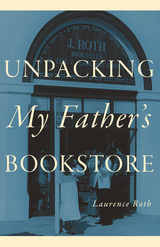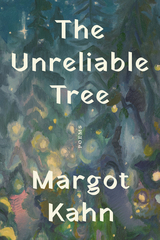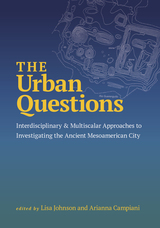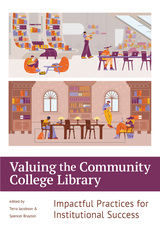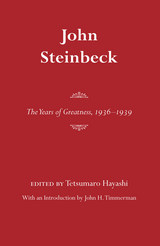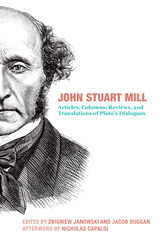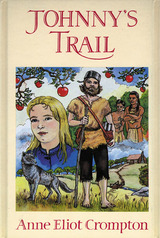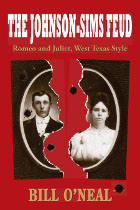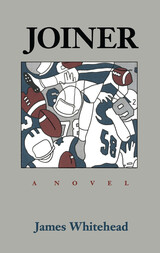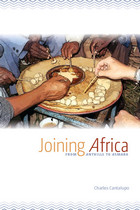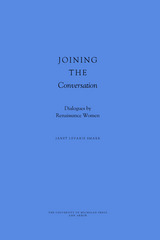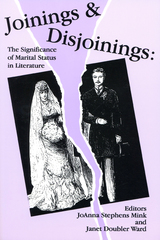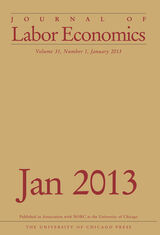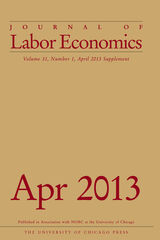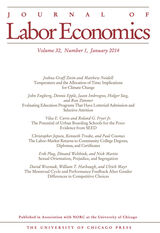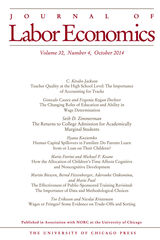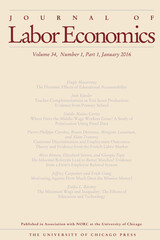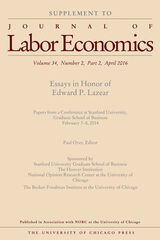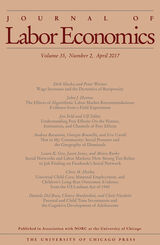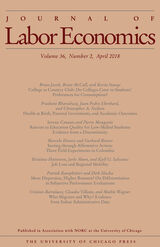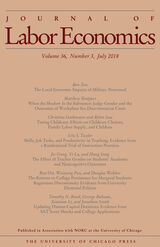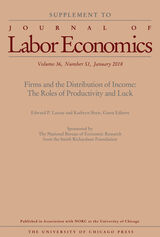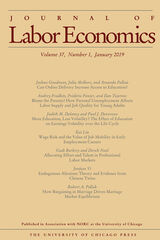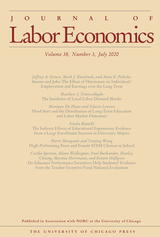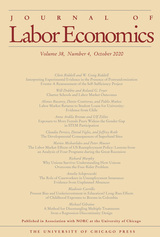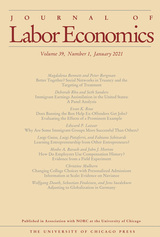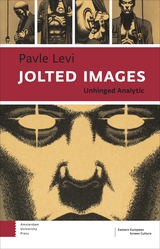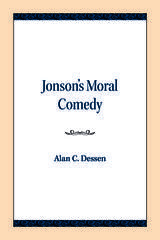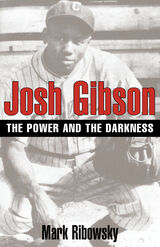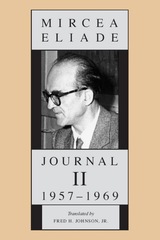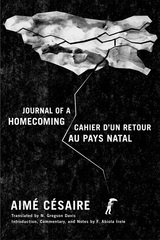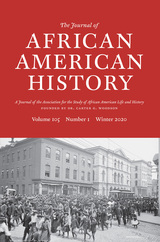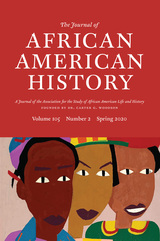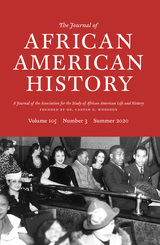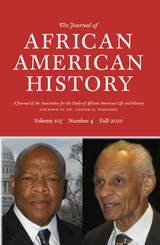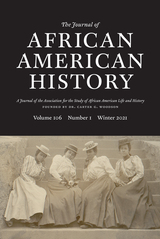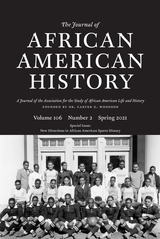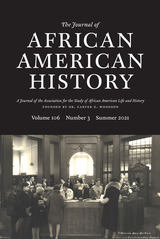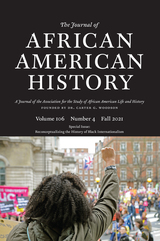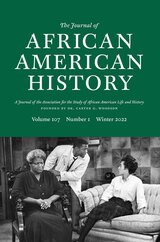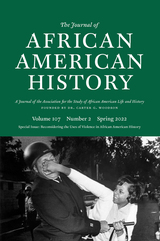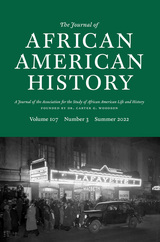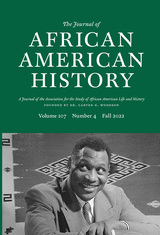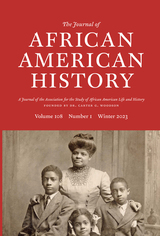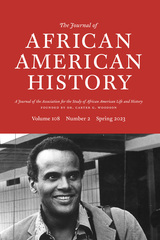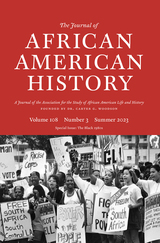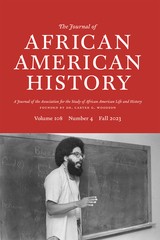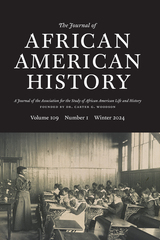 John Ruskin, or the Ambiguities of Abundance: A Study in Social and Economic Criticism
James Clark Sherburne
Harvard University Press, 1972 Until 1860 John Ruskin's writings were primarily about art and architecture; but his belief that good art can flourish only in a society that is sound and healthy led him inevitably to a preoccupation with social and economic problems, the dominant concern of his later writings. James Clark Sherburne provides in this volume a detailed and long overdue re-examination of Ruskin's social and economic perceptions and, for the first time, systematically places these perceptions in their nineteenth-century intellectual context.
Ruskin's eloquence and the strength of his moral, aesthetic, and social convictions established him as one of the most influential of Victorian writers. His writings, however, are not easily categorized and many of his important insights occur as digressions in discussions of other topics. Mr. Sherburne succeeds in ordering and clarifying the rich chaos of Ruskin's social thought without denying that wholeness which is, paradoxically, its salient feature. He discovers the source of Ruskin's social criticism in his early writings. He then follows Ruskin's interest as it shifts from economic theory to the problems of exploitation, war, imperialism, the means of social reform, and the construction of the welfare state.
Ruskin's remarkably early vision of the possibility of economic abundance, his anticipation of its social and personal implications, his much disparaged critique of classical economics, his pioneering attention to the role of the consumer and the quality of consumption, his anxious portrayal of the effects of industrialism on the environment, his critique of English educational methods, and his farsighted proposals for public management of industry and transport are among the many aspects of Ruskin's thought examined by Mr. Sherburne. What emerges is an original and exhaustive study of a dimension of Ruskin's work which, though much neglected, is particularly relevant to contemporary concerns.
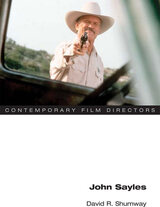 John Sayles
David R. Shumway
University of Illinois Press, 2012 John Sayles is the very paradigm of the contemporary independent filmmaker. By raising much of the funding for his films himself, Sayles functions more independently than most directors, and he has used his freedom to write and produce films with a distinctive personal style and often clearly expressed political positions. From The Return of the Secaucus Seven to Sunshine State, his films have consistently expressed progressive political positions on issues including race, gender, sexuality, class, and disability. In this study, David R. Shumway examines the defining characteristic of Sayles's cinema: its realism. Positing the filmmaker as a critical realist, Shumway explores Sayles's attention to narrative in critically acclaimed and popular films such as Matewan, Eight Men Out, Passion Fish, and Lone Star. The study also details the conditions under which Sayles's films have been produced, distributed, and exhibited, affecting the way in which these films have been understood and appreciated. In the process, Shumway presents Sayles as a teacher who tells historically accurate stories that invite audiences to consider the human world they all inhabit.
 John Singleton Copley
Jules David Prown
Harvard University Press John Singleton Copley is a richly illustrated, two-volume study of the major colonial American artist who subsequently became a leading English painter.
Volume I deals with Copley's life and career in America. Containing 334 illustrations and a checklist, it combines all the available biographical data with an authoritative analysis of the artist's stylistic development, from his earliest ventures in 1753 to the achievements of his later American years. This volume also presents a detailed statistical study of Copley's American sitters that provides unusual insights into the artist-client relationship.
Volume II presents the first comprehensive investigation of Copley's career after he left America in 1774. In it, his study trip to Italy and the ensuing, highly productive years in England are thoroughly explored. This volume contains 334 illustrations, including a number of pictures never before published, and provides the only complete catalogue of Copley's post-American work.
This is the first publication in a new series, The Ailsa Mellon Bruce Studies in American Art, to be published by Harvard University Press for the National Gallery of Art, Washington, D.C.
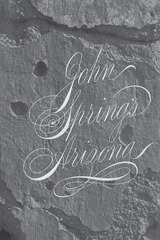 John Spring's Arizona
A. M. Gustafson
University of Arizona Press, 1966 John Spring, a Swiss volunteer wounded in Civil War action, was sent to Arizona with the Regular Army of 1866 and became the most versatile and articulate of frontier reporters. A fine education and a broad knowledge of the world combined with an urbane pen to enable this pioneer educator, desert farmer, sutler, and brewer to be also a court translator, a correspondent for metropolitan U.S. newspapers and European periodicals, and a hardy soldier amid Apache perils.
John Spring first saw Arizona from an encampment on the west side of the Colorado River at "a small town called Yuma . . . then called Arizona City . . . it did a thriving fandango and saloon business during the period of continual going and coming of troops and teamsters." Southern Arizona, as Spring first saw and described it, was "a country where every highway, every path, every hamlet, and nearly every rancho could tell (had they the gift of speech) of devilish deeds, of crafty ambuscade, murdered settlers and travellers."
Supported by knowledge of several languages and wide reading, John Spring was able to extend his reporting to geographical and botanical description, to detailed reports of agriculture in the Santa Cruz Valley, and mercantile activity in Tucson. But he returned always to people--an irresistible center of interest for John Spring.
The lively and authentic serial reports of John Spring to the National Tribune in Washington, D.C., have been assembled and edited in this volume by A. M. Gustafson.
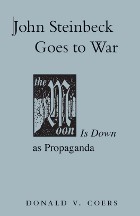 John Steinbeck Goes to War: The Moon is Down as Propaganda
Donald V. Coers
University of Alabama Press, 2005 Winner of the Elizabeth Agee Prize in American Literature, 1990 When words became weapons—Steinbeck’s novel and the underground war for freedom. In March 1942, a desperate period for the allies in World War II, John Steinbeck published his propaganda novel The Moon is Down—the story of ruthless invaders who overrun a militarily helpless country. Throughout the novel, Steinbeck underscored both the fatal weakness of the “invincible” unnamed aggressors and the inherent power of the human values shard by the “conquered” people. The Moon is Down created an immediate sensation among American literary critics; fierce debate erupted over Steinbeck’s uncommonly sympathetic portrayal of the enemy and the novel’s power as a vehicle for propaganda. Fifty years later, Coers continues the debate, relying heavily on unpublished letters and personal interviews with the lawyers, book dealers, actors, publishers, and housewives associated with the resistance movements in Western Europe. Clandestine translations of The Moon Is Down quickly appeared and were widely circulated under the noses of the Gestapo. Coers documents the fate of Steinbeck’s novel in the hands of World War II resistance fighters and deepens our appreciation of Steinbeck’s unique ability to express the feelings of oppressed peoples.
John Steinbeck: The Years of Greatness, 1936-1939
Tetsumaro Hayashi
University of Alabama Press, 1993 This volume is derived from papers presented by the North American delegates at the Third International Steinbeck Congress, held in May 1990 in Honolulu, Hawaii, under the co-sponsorship of the Steinbeck Society of Japan and the International Steinbeck Society. These ten essays, arranged in two parts, seek to provide a clearer understanding of Steinbeck's life and work during his most productive period. Part I discusses Steinbeck's women, with emphasis on the function of the feminine from original perspectives. It uses recent research sources, including some of the Steinbeck-Gwyn love letters and poems. Part II explores the Depression trilogy—"In Dubious Battle", "Of Mice and Men," and "The Grapes of Wrath"—Steinbeck's major works of the late 1930s.
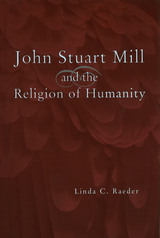 John Stuart Mill and the Religion of Humanity
Linda C. Raeder
University of Missouri Press, 2002
John Stuart Mill and the Religion of Humanity introduces material that requires significant reevaluation of John Stuart Mill’s contribution to the development of the liberal tradition. Through his influence, the radical anti-Christianity of the French tradition was incorporated into the Anglo-American political tradition. Mill’s nontheological utilitarianism also involved the equally important insinuation of Comtean “altruism,” with its notion of the superiority of social morality over personal morality, into Anglo-American consciousness. Linda C. Raeder’s study carefully examines the nature of modern secular liberalism, the chief political carrier of the Millian form of secular religiosity in the American context.
Raeder explores the influence of James Mill, Jeremy Bentham, Claude-Henri Saint-Simon, and Auguste Comte on John Stuart Mill’s religious thought and aims. She treats Mill’s Three Essays on Religion, discusses his participation in the Mansel controversy, and offers a new interpretation of On Liberty and Utilitarianism, both of which were crucial instruments in the accomplishment of his religious mission.
Raeder contends that Mill’s religious aim was two-pronged—the undermining of Christian belief and the establishment of the allegedly superior social morality and spirituality embodied in the “Religion of Humanity” that he adopted, with revisions, from Comte. Mill intended his philosophical writings to assist in the realization of this aim, and they cannot adequately be comprehended without an awareness of their subterranean religious theme.
John Stuart Mill and the Religion of Humanity examines the religious thought and aspirations of the philosopher and shows that, contrary to the conventional view of Mill as the prototypical secular liberal, religious preoccupations dominated his thought and structured his endeavors throughout his life. For a proper appreciation of Mill’s thought and legacy, the depth of his animus toward traditional transcendent religion must be recognized, along with the seriousness of his intent to found a nontheological religion to serve as its replacement.
John Stuart Mill: Articles, Columns, Reviews and Translations of Plato's Dialogues
John Stuart Mill
St. Augustine's Press, 2021 This is the second volume, following the well-received edition of Mill’s writing essential to understanding the liberal tradition. His commentary on a full spectrum of issues gives further insight into the strengths and vulnerabilities of liberal democratic theory in practice. Rare and difficult to locate material is here brought to attention and made available.
The contribution of Mill’s most authoritative biographer, Nicholas Capaldi, is a singular and unmatched highlight. The tenor of St. Augustine’s Press volumed on Mill is distinct in its intention to place his work in the framework of political philosophy and the conversation of the viability of liberalism as a tradition of thought.
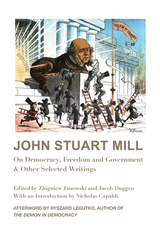 John Stuart Mill: On Democracy, Freedom and Government & Other Selected Writings
John Stuart Mill
St. Augustine's Press, 2019 In addition to “On Liberty” and “On Representative Government,” this new selection of Mill’s writings includes, among others, a number of less known of his writings, such as: “Civilization,” “Perfectibility,” “The Negro Question,” “On Education,” “On Aristocracy,” “On Marriage,” “On Free Press,” “Socialism,” Mill’s review of Tocqueville’s “Democracy in America,” his letters to Tocqueville, and several other writings.
If one can use a somewhat exaggerated language, Mill’s writings are to liberal-democracy what Marx and Engels’ writings were to Communism. Both systems gave expression to 19th century man’s longing for equality and justice, both promised to liberate him from the shackles of oppression, authority and tradition. Instead of liberating man, Communism created the most brutal system in human history, and its spectacular fall in 1989 is one of history’s greatest events. Western world today shows that liberal-democracy is no longer a benign doctrine, which advocates free market, minimum state and individual liberties, but, like Communism, is an all-encompassing ideology which forces an individual to abdicate his freedom and soul in favor of a Communist-like collective.
As many critics of real Socialism could see the seeds of totalitarianism in the writings of Marx and Engels, so one can see the seeds of liberal totalitarianism in Mill’s writings. This new edition is intended to help readers to understand why democratic-liberalism came so close to its 19th century ideological rival.
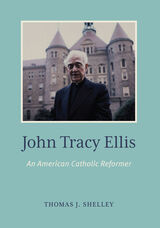 John Tracey Ellis: An American Church Reformer
Thomas J. Shelley
Catholic University of America Press, 2023 For several decades prior to his death in October1992, Monsignor John Tracy Ellis was the most prominent historian of American Catholicism. His bibliography lists 395 published works, including seventeen books, most famously, American Catholics and the Intellectual Life, a scathing indictment of the mediocrity of Catholic higher education and a clarion call for American Catholics to make a greater contribution to American intellectual life. Ellis’s ecumenically-minded scholarship led to his election in 1969 as the President of both the American Catholic Historical Association and the predominantly Protestant American Society of Church History.
As a professor at the Catholic University of America, Ellis trained numerous graduate students, who made their own contributions to American Catholic history, and he also furthered the careers of several talented young church historians. Especially in his later years, during the polarized atmosphere that followed Vatican II, Ellis became an outspoken but balanced advocate of reform in the Church, urging greater transparency and honesty, collegiality on the diocesan level, a role for the laity in the selection of bishops, reassessment of church teaching on birth control, decentralization to provide an enhanced role for the local churches, and an eloquent defense of religious freedom and the American Catholic commitment to separation of church and state.
His fellow church historian, Jay P. Dolan, remarked that Ellis “used history as an instrument to promote changes he believed necessary for American Catholicism. . . .No other historian of American Catholicism matched Ellis in this regard.”
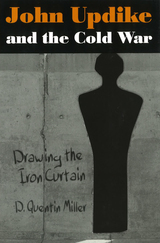 John Updike and the Cold War: Drawing the Iron Curtain
D. Quentin Miller
University of Missouri Press, 2001
One of the most enduring and prolific American authors of the latter half of the twentieth century, John Updike has long been recognized by critics for his importance as a social commentator. Yet, John Updike and the Cold War is the first work to examine how Updike's views grew out of the defining context of American culture in his time—the Cold War. Quentin Miller argues that because Updike's career began as the Cold War was taking shape in the mid-1950s, the world he creates in his entire literary oeuvre—fiction, poetry, and nonfiction prose—reflects the optimism and the anxiety of that decade.
Miller asserts that Updike's frequent use of Cold War tension as a metaphor for domestic life and as a cultural reality that affects the psychological security of his characters reveals the inherent conflict of his fictional world. Consequently, this conflict helps explain some of the problematic relationships and aimless behavior of Updike's characters, as well as their struggles to attain spiritual meaning.
By examining Updike's entire career in light of the historical events that coincide with it, Miller shows how important the early Cold War mind-set was to Updike's thinking and to the development of his fiction. The changes in Updike's writing after the 1950s confirm the early Cold War era's influence on his ideology and on his celebrated style. By the Cold War's end in the late 1980s, Updike's characters look back fondly to the Eisenhower years, when their national identity seemed so easy to define in contrast to the Soviet Union. This nostalgia begins as early as his writings in the 1960s, when the breakdown of an American consensus disillusions Updike's characters and leaves them yearning for the less divisive 1950s.
While underscoring how essential history is to the study of literature, Miller demonstrates that Updike's writing relies considerably on the growth of the global conflict that defined his time. Cogent and highly readable, John Updike and the Cold War makes an important contribution to Updike scholarship.
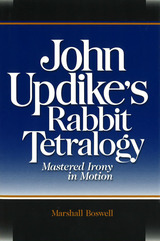 John Updike's Rabbit Tetralogy: Mastered Irony in Motion
Marshall Boswell
University of Missouri Press, 2001
Early in his career, John Updike announced his affinity with the Christian existentialism of Soren Kierkegaard, Paul Tillich, Karl Barth, and others. Because of this, many of Updike's critics have interpreted his work from within a Christian existentialist context. Yet Kierkegaard and Barth provide Updike with much more than a mere context, for their dialectical thinking serves as the springboard for Updike's own unique dialectical vision, a complex matrix of ethical precepts, theological beliefs, and aesthetic principles that governs nearly all of his literary output. Nowhere else in his immense corpus is this vision more clearly and thoroughly expressed than in his four Rabbit novels, which were gathered into the single volume Rabbit Angstrom in 1995. However, because Updike's critics have chosen to read the Rabbit novels as discrete, freestanding texts, they have by and large failed to extract the precepts of this private vision.
In John Updike's Rabbit Tetralogy, Marshall Boswell redresses this imbalance by treating the Rabbit tetralogy as a single, unified "mega-novel." He demonstrates that, taken together as a single work, the four discrete sections of the tetralogy not only provide a coherent and complete articulation of Updike's unique existential vision but also compose a unified work of remarkable formal complexity. Boswell brings to Updike's work the concept of "mastered irony," a term coined by Kierkegaard to describe the presentation of two legitimate but contradictory sides of an issue. In the Rabbit novels, these issues range from adultery to drug addiction, from race to redemption, with each issue examined through the refracting lens of Updike's own ironic method. Boswell shows that although each of the four individual Rabbit novels confirms this dialectical strategy in a unique way, the completed tetralogy comprises an additional series of dialectical pairs that sustain, rather than resolve, thematic and formal tension. Ultimately, the structure of the finished "mega-novel" echoes the work's thematic rationale.
To help readers who are interested in a particular Rabbit novel, Boswell devotes a chapter to each individual section of the tetralogy. At the same time, he treats each novel as an integral part of the more comprehensive whole. Honoring the full complexity of Updike's provocative thinking without losing sight of the tetralogy's popular appeal, John Updike's Rabbit Tetralogy makes a valuable addition to the study of Updike's work.
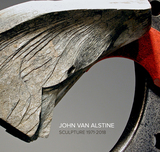 John Van Alstine: Sculpture, 1971–2018
Howard Fox
The Artist Book Foundation, 2019 For nearly fifty years, John Van Alstine has created abstract sculptures forged from steel and stone. In John Van Alstine: Sculpture, 1971–2018, three notable essayists explore the sculptor’s abstract landscapes that reveal the complex synergy between natural forces and man-made elements; by grappling with the challenges of balancing stone and steel, Van Alstine’s indoor, outdoor, and site-specific sculptures are measured and calculated, yet simultaneously poetic; their swooping angular lines create expansive spaces beyond the limits of their stone-and-steel frames to unveil our collective history and imagination, illuminating a deft interplay of natural energies and the human experience.
The artist weaves into his works elements of mythology, celestial navigation, implements, human figures, movement, urban forms, and found objects, while using motion, balance, and inertia to incorporate the eternal forces of gravity, tension, and erosion. In an essay on his drawings, Van Alstine details the critical role they play in the initiation and planning of his projects, offering the reader a firsthand perspective on the artist’s creative process. Van Alstine’s works have been featured in numerous solo and group exhibitions and are found in the permanent collections of the Carnegie Museum of Art, the Hirshhorn Museum and Sculpture Garden, the Smithsonian’s National Museum of American Art, and the Phillips Collection, to name but a few. His works are also found in numerous public and private collections. The Artist Book Foundation is gratified to announce the publication of this lavishly illustrated monograph on an esteemed and prolific contemporary artist.
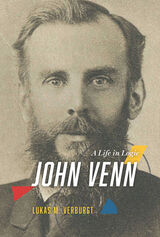 John Venn: A Life in Logic
Lukas M. Verburgt
University of Chicago Press, 2022 The first comprehensive history of John Venn’s life and work.
John Venn (1834–1923) is remembered today as the inventor of the famous Venn diagram. The postmortem fame of the diagram has until now eclipsed Venn’s own status as one of the most accomplished logicians of his day. Praised by John Stuart Mill as a “highly successful thinker” with much “power of original thought,” Venn had a profound influence on nineteenth-century scientists and philosophers, ranging from Mill and Francis Galton to Lewis Carroll and Charles Sanders Peirce. Venn was heir to a clerical Evangelical dynasty, but religious doubts led him to resign Holy Orders and instead focus on an academic career. He wrote influential textbooks on probability theory and logic, became a fellow of the Royal Society, and advocated alongside Henry Sidgwick for educational reform, including that of women’s higher education. Moreover, through his students, a direct line can be traced from Venn to the early analytic philosophy of G. E. Moore and Bertrand Russell, and family ties connect him to the famous Bloomsbury group.
This essential book takes readers on Venn’s journey from Evangelical son to Cambridge don to explore his life and work in context. Drawing on Venn’s key writings and correspondence, published and unpublished, Lukas M. Verburgt unearths the legacy of the logician’s wide-ranging thinking while offering perspective on broader themes in religion, science, and the university in Victorian Britain. The rich picture that emerges of Venn, the person, is of a man with many sympathies—sometimes mutually reinforcing and at other times outwardly and inwardly contradictory.
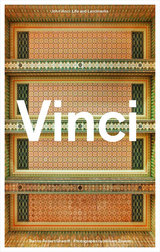 John Vinci: Life and Landmarks
Text by Robert Sharoff, Photographs by William Zbaren
Northwestern University Press, 2017 John Vinci: Life and Landmarks is the first authoritative survey of the life and work of one of Chicago’s most acclaimed architects and preservationists. Long awaited by scholars as well as by architecture aficionados, John Vinci provides an intimate look at an architect whose portfolio spans half a century and includes the restoration of some of the city’s most important historic structures as well as numerous award-winning original projects.
This illustrated biography traces Vinci’s origins as a child of Italian immigrants on Chicago’s South Side and his coming of age at the Illinois Institute of Technology, which was then under the direction of the legendary Modernist architect Ludwig Mies van der Rohe. It follows his career through his subsequent immersion in the historic preservation movement and the work of such early Chicago architects as Louis Sullivan, Frank Lloyd Wright, and John Wellborn Root.
Vinci’s pioneering restoration projects include Frank Lloyd Wright’s Robie House and Home Studio, Sullivan’s Chicago Stock Exchange Trading Room and the Carson Pirie Scott Building, and Root’s Monadnock Building. His original work, meanwhile, includes notable buildings such as the Arts Club of Chicago, numerous award-winning residences, and more than fifty major exhibitions at the Art Institute of Chicago and other museums.
John Vinci: Life and Landmarks also features portraits and profiles of Vinci’s friends and mentors over the years, including the architectural photographer Richard Nickel, the landscape designer Alfred Caldwell, the Art Institute curators James Speyer and Anne Rorimer, the architects Crombie Taylor and Myron Goldsmith, and the City of Chicago’s cultural historian Tim Samuelson.
The book includes new photos of twenty projects by noted architectural photographer William Zbaren as well as more than one hundred vintage photos and floorplans from Vinci’s personal archives, many never before published. A comprehensive catalogue raisonné rounds out this handsome and definitive work.
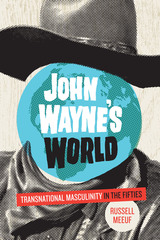 John Wayne’s World: Transnational Masculinity in the Fifties
By Russell Meeuf
University of Texas Press, 2013 In a film career that spanned five decades, John Wayne became a U.S. icon of heroic individualism and rugged masculinity. His widespread popularity, however, was not limited to the United States: he was beloved among moviegoers in Asia, Africa, Latin America, and Europe. In John Wayne’s World, Russell Meeuf considers the actor’s global popularity and makes the case that Wayne’s depictions of masculinity in his most popular films of the 1950s reflected the turbulent social disruptions of global capitalism and modernization taking place in that decade. John Wayne’s World places Wayne at the center of gender- and nation-based ideologies, opening a dialogue between film history, gender studies, political and economic history, and popular culture. Moving chronologically, Meeuf provides new readings of Fort Apache, Red River, Hondo, The Searchers, Rio Bravo, and The Alamo and connects Wayne’s characters with a modern, transnational masculinity being reimagined after World War II. Considering Wayne’s international productions, such as Legend of the Lost and The Barbarian and the Geisha, Meeuf shows how they resonated with U.S. ideological positions about Africa and Asia. Meeuf concludes that, in his later films, Wayne’s star text shifted to one of grandfatherly nostalgia for the past, as his earlier brand of heroic masculinity became incompatible with the changing world of the 1960s and 1970s. The first academic book-length study of John Wayne in more than twenty years, John Wayne’s World reveals a frequently overlooked history behind one of Hollywood’s most iconic stars.
 John Wesley North and the Reform Frontier
Merlin Stonehouse
University of Minnesota Press, 1965 John Wesley North and the Reform Frontier was first published in 1965. Minnesota Archive Editions uses digital technology to make long-unavailable books once again accessible, and are published unaltered from the original University of Minnesota Press editions. This biography is the absorbing and significant story of a frontier life in America in the nineteenth century. John Wesley North was a carpetbagger in the best sense of the word, and professor Stonehouse points out that no fallacy is more persistent in American history than the generalization that carpetbaggers were evil opportunists peculiar to the southward movement after the Civil War. North's aims, ambitions, and ideas were typical of many carpetbaggers whose common aspiration was the evangelical humanism that flourished in all of the English-speaking world at that time except in the slave-holding South. Born in upstate New York in 1815, North migrated westward. For the rest of his life he pursued business and political interests with equal zest and championed many social causes. He went to Minnesota, Nevada, and California without enough money to live on, yet contributed significantly to their early history. He was a founder of Minneapolis, proprietor of Fairbault and Northfield, a founder of the University of Minnesota and of the Republican party in Minnesota, and a leader in the state's constitutional convention. In Nevada he helped shape land policy and mining law and found its cities and was president of the 1863 constitutional convention. He helped develop Southern California, where he established Oleander and Riverside. These three states welcomed him as a penniless dreamer, and he added much to the development of each. But in Tennessee, where he arrived with a fortune, eager to help rebuild the war-torn state, his best efforts resulted only in recrimination and his financial ruin. Thus North's life illustrates the sorry truth of General Sherman's comment that the carpetbaggers built the West but were not permitted to build the South.
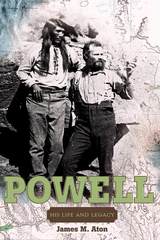 John Wesley Powell: His Life and Legacy
James M Aton
University of Utah Press, 2010 “John Wesley Powell: explorer, writer, geologist, anthropologist, land planner, bureaucrat. Which one do we focus on?” This is the question author James M. Aton poses at the beginning of his biography of Powell, though he soon decides that it is impossible to ignore any facet of Powell’s life. Powell was a polymath, one whose “divergent interests resemble one of those braided streambeds in his beloved canyon country, branching out in many directions, but ultimately beginning and ending in the same stream." Aton beautifully tells the multidimensional stories of Powell’s childhood, his military and teaching careers, his famous and exciting explorations of the Colorado River, and the battles he waged from his influential positions within the Smithsonian’s Bureau of Ethnology and the United States Geological Survey. This new edition of John Wesley Powell: His Life and Legacy, first printed as an issue of the Boise State University Western Writers Series, includes the original biography, but also features Aton’s new interpretations of Powell’s writings on exploration, land-planning, anthropology, and irrigation, and incorporates the author’s distinguished faculty lecture on Powell and cash-register dams in the Colorado River Basin.
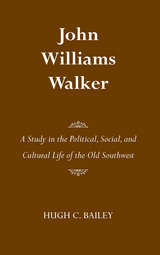 John Williams Walker: A Study in the Political, Social, and Cultural Life of the Old Southwest
Hugh C. Bailey
University of Alabama Press, 1964 A biography of Alabama’s first Senator, this book is also the fascinating story of Southern frontier life as portrayed in contemporary letters and documents. When Madison County, Alabama, was still wilderness, Walker trekked across the mountains from Georgia with his bride, Matilda Pope, his slaves, and all his household possessions, to build a plantation near Huntsville. Here he began his extraordinary political career: member of the first territorial legislature; speaker of the house in the second; U.S. territorial judge; president of Alabama’s Constitutional Convention; and when statehood was won, first U.S. Senator. Though his term in the Senate was cut short by illness, resignation, and death, in the four years he served, he met head-on the most controversial issues of his day—the Missouri Compromise, acquisition of Florida, and land relief legislation. It was in land relief that he made his most significant contribution, for he fathered the 1821 Land Law upon which new public-lands legislation for a decade thereafter was based. His own state wildly acclaimed him upon its passage; other frontier states had good reason to make him the public hero he became. But a year later, at 40, he was dead of tuberculosis.
 John Williams's Film Music: Jaws, Star Wars, Raiders of the Lost Ark, and the Return of the Classical Hollywood Music Style
Emilio Audissino
University of Wisconsin Press, 2014 John Williams is one of the most renowned film composers in history. He has penned unforgettable scores for Star Wars, the Indiana Jones series, E.T. the Extra-Terrestrial, Jaws, Superman, and countless other films. Fans flock to his many concerts, and with forty-nine Academy Award nominations as of 2014, he is the second-most Oscar-nominated person after Walt Disney. Yet despite such critical acclaim and prestige, this is the first book in English on Williams’s work and career.
Combining accessible writing with thorough scholarship, and rigorous historical accounts with insightful readings, John Williams’s Film Music explores why Williams is so important to the history of film music. Beginning with an overview of music from Hollywood’s Golden Age (1933–58), Emilio Audissino traces the turning points of Williams’s career and articulates how he revived the classical Hollywood musical style. This book charts each landmark of this musical restoration, with special attention to the scores for Jaws and Star Wars, Williams’s work as conductor of the Boston Pops Orchestra, and a full film/music analysis of Raiders of the Lost Ark. The result is a precise, enlightening definition of Williams’s “neoclassicism” and a grounded demonstration of his lasting importance, for both his compositions and his historical role in restoring part of the Hollywood tradition.
Best Special Interest Books, selected by the American Association of School Librarians
Best Books for General Audiences, selected by the Public Library Reviewers
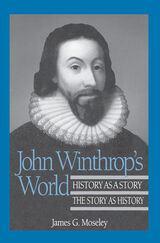 John Winthrop's World: History as a Story; The Story as History
James G. Moseley
University of Wisconsin Press, 1992 One of the most famous American journals is that of seventeenth-century Puritan leader John Winthrop. As the first governor of the Massachusetts Bay Colony, an office he held with few interruptions for two decades, he worked to establish a society in which he thought true Christianity could flourish, beyond the reach of the unfaithful Church of England. Winthrop recorded the daily events of his life—the political infighting and religious disputes among Puritans, as well as their relations with other colonists, Indians, and England. His journal is a window into a world that, while unfamiliar, continues to influence our sense of the meaning of America.
In the first in-depth study of Winthrop since 1958, James G. Moseley provides a fascinating new look at this extraordinary man, paying careful attention to the connections between Winthrop’s political activity and his writing. Moseley first examines Winthrop as a writer, using the journal to analyze Winthrop as a man resolving challenges based as much on his acutely pragmatic intelligence as on his deeply felt religious convictions. Second, Moseley traces how historians have responded to Winthrop—how his famous journal has been read and misread by those who have filtered the man and his cultural context through many lenses.
By examining Winthrop’s ancestors and early life in England, especially the religious changes he experienced, Moseley removes the blinders of modernism, portraying Winthrop as never before. He shows how Winthrop’s successful struggle to accept the deaths of his first two wives led him away from moralistic views of Christianity, himself, and his world to more magnanimous views.
Arguing that writing was the medium through which Winthrop developed his capacity for leadership, Moseley shows how the journal enabled Winthrop to reflect objectively on his situation and to adjust his behavior. Winthrop was, Moseley suggests, not only a politician but a historian, and his interpretations of foundational events in American history in his journal are an invaluable resource for understanding the nature of leadership and the meaning of liberty in Puritan America.
Winthrop’s World is a very graceful, well-written, and engaging narrative that provides new insight into the Puritan way of life and into the man who provided a window between our world and his.
 John Witherspoon and the Founding of the American Republic
Jeffry H. Morrison
University of Notre Dame Press, 2005
Jeffry H. Morrison offers readers the first comprehensive look at the political thought and career of John Witherspoon—a Scottish Presbyterian minister and one of America’s most influential and overlooked founding fathers. Witherspoon was an active member of the Continental Congress and was the only clergyman both to sign the Declaration of Independence and to ratify the federal Constitution. During his tenure as president of the College of New Jersey at Princeton, Witherspoon became a mentor to James Madison and influenced many leaders and thinkers of the founding period. He was uniquely positioned at the crossroads of politics, religion, and education during the crucial first decades of the new republic.
Morrison locates Witherspoon in the context of early American political thought and charts the various influences on his thinking. This impressive work of scholarship offers a broad treatment of Witherspoon’s constitutionalism, including his contributions to the mediating institutions of religion and education, and to political institutions from the colonial through the early federal periods. This book will be appreciated by anyone with an interest in American political history and thought and in the relation of religion to American politics.
“I have been waiting a long time for such a book on John Witherspoon. This book is not only well-researched, but well-written. The story Morrison tells is quite wonderful.” —Michael Novak, American Enterprise Institute for Public Policy Research
"Dr. John Witherspoon is at once an exceptionally influential figure in Early American history, and a sadly neglected one. Professor Morrison's book fills this gap in American political history brilliantly. It is especially revealing of 18th century views on the interrationships between education, religion, and society. Morrison presents new insights into the Early American understanding of balancing faith, government, and society. It will change our conceptions of this period and provide fresh perspectives on contemporary problems. Everyone interested in the American Founding era is indebted to Morrison for this illuminating book." —Garrett Ward Sheldon, University of Virginia's College at Wise
"At last we have a full and learned account, as the title states, of JOHN WITHERSPOON aND THE FOUNDING OF THE AMERICAN REPUBLIC. Including discussion of Witherspoon's direct role in the crucial events of 1775-1790 as an advocate of Independence and friend of the Constitution, as a contributor to early American religious and political thought, and most important, as a mentor to James Madison and other Princeton revolutionairies and nation-builders, Morrison reveals Witherspoon's high standing in American religious, educational, and political history. Madison remembered Witherspoon's injunction to his students to 'Lead useful Lives;' he provided an excellent role model." —Ralph Ketcham, Syracuse University
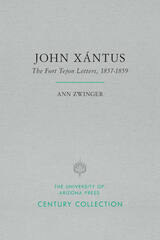 John Xántus: The Fort Tejon Letters, 1857–1859
Ann Zwinger
University of Arizona Press, 1986 John Xántus was a bit of a charlatan; of that there is little doubt. He lied about his exploits, joined the U.S. Army under an assumed name, and managed to alienate most of the people he met. Yet this Hungarian immigrant became one of the Smithsonian Institution’s most successful collectors of natural history specimens in the mid-nineteenth century, and he is credited with the discovery of many new species in the American West.
From his station at Ft. Tejon in California’s Tehachapi Mountains, Xántus carried on a lengthy correspondence with Spencer Baird at the Smithsonian, to whom he shipped the specimens he had trapped or shot in the surrounding sierra and deserts. A prolific letter writer, Xántus faithfully reported his findings as he bemoaned his circumstances and worried about his future.
Working from Smithsonian archives, natural history writer Ann Zwinger has assembled Xántus’s unpublished letters into a book that documents his trials and triumphs in the field and reveals much about his dubious character. The letters also bring to life a time and place on the western frontier from which Xántus was able to observe a broad panorama of American history in the making.
Zwinger’s lively introduction sets the stage for Xántus’s correspondence and examines the apparent contradictions between the man’s personal and professional lives. Her detailed notes to the letters further clarify his discoveries and shed additional light on his checkered career.
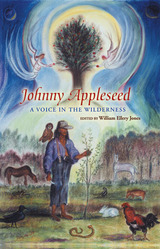 JOHNNY APPLESEED: A VOICE IN THE WILDERNESS
WILLIAM ELLERY JONES
Swedenborg Foundation Publishers, 2000
The man popularly credited with planting apple trees throughout the Midwest, John "Appleseed" Chapman epitomizes the American folk hero and pioneer: a man of humble origins who headed west to seek his destiny.
The essays in this collection bring to life the real Johnny Appleseed (1774-1845). A courageous, God-fearing, peaceful, and spartan figure, Chapman was welcomed by settlers and Native Americans alike. He was an unusual businessman -- one who believed that his "wealth" was sown in the trees he planted rather than in banks.
But most of all, Johnny Appleseed was a lover of nature whose respect for all living things was born of his faith. An itinerant "missionary," he provided settlers with "news fresh from heaven" -- pages from the works of eighteenth-century theologian Emanuel Swedenborg.
Editor William Ellery Jones has updated historical essays that explore how Chapman's legend grew both during and after his life.
 Johnny Cash International: How and Why Fans Love the Man in Black
Michael Hinds and Jonathan Silverman
University of Iowa Press, 2020 2023 Peggy O'Brien Book Prize, winner
Across all imaginable borders, Johnny Cash fans show the appeal of a thoroughly American performer who simultaneously inspires people worldwide. A young Norwegian shows off his Johnny Cash tattoo. A Canadian vlogger sings “I Walk the Line” to camel herders in Egypt’s White Desert. A shopkeeper in Northern Ireland plays Cash as his constant soundtrack. A Dutchwoman coordinates the activities of Cash fans worldwide and is subsequently offered the privilege of sleeping in Johnny’s bedroom. And on a more global scale, millions of people watch Cash’s videos online, then express themselves through commentary and debate. In Johnny Cash International, Hinds and Silverman examine digital and real-world fan communities and the individuals who comprise them, profiling their relationships to Cash and each other. Studying Johnny Cash’s international fans and their love for the man reveals new insights about music, fandom, and the United States.
 Johnny Depp Starts Here
Pomerance, Murray
Rutgers University Press, 2005 From beloved bad-boy to cool and captivating maverick, Johnny Depp has inspired media intrigue and has been the source of international acclaim since the early 1990s. He has attracted attention for his eccentric image, his accidental acting career, his beguiling good looks, and his quirky charm. In Johnny Depp Starts Here, film scholar Murray Pomerance explores our fascination with Depp, his riddling complexity, and his meaning for our culture. Moving beyond the actor's engaging and inscrutable private life, Pomerance focuses on his enigmatic screen performances from A Nightmare on Elm Street to Secret Window.
The actor's image is studied in terms of its ambiguities and its many strange nuances: Depp's ethnicity, his smoking, his tranquility, his unceasing motion, his links to the Gothic, the Beats, Simone de Beauvoir, the history of rationality, Impressionist painting, and more. In a series of treatments of his key roles, including Rafael in The Brave, Bon Bon in Before Night Falls, Jack Kerouac in The Source, and the long list of acclaimed performances from Gilbert Grape to Cap'n Jack Sparrow, we learn of Johnny onscreen in terms of male sexuality, space travel, optical experience, nineteenth-century American capitalism, Orientalism, the vulnerability of performance, the perils of sleep, comedy, the myth of the West, Scrooge McDuck, Frantois Truffaut, and more.
Johnny's face, Johnny's gaze, Johnny's aging, and Johnny's understatement are shown to be inextricably linked to our own desperate need to plumb performance, style, and screen for a grounding of reality in this ever-accelerating world of fragmentation and insecurity. Both deeply intriguing and perpetually elusive, Depp is revealed as the central screen performer of the contemporary age, the symbol of performance itself.
No thinker has meditated on Johnny Depp this way before-and surely not in a manner worthy of the object of scrutiny.
JOHNNY'S TRAIL
ANNE CROMPTON
Swedenborg Foundation Publishers, 1986
John Chapman, better known as Johnny Appleseed, is seen through the eyes of a lost child in this short work of historical fiction.
Johnson After Three Centuries: New Light on Texts and Contexts
Thomas A. Horrocks
Harvard University Press Johnson After Three Centuries: New Light on Texts and Contexts examines several aspects of Johnson's career through fresh perspectives and original interpretations by some of the best-known and widely-respected scholars of our time. Included are essays by James Basker, James Engell, Nicholas Hudson, Jack Lynch, and Allen Reddick.
 Johnson and His Age
James Engell
Harvard University Press, 1984 Published in the bicentennial year of Samuel Johnson’s death, Johnson and His Age includes contributions by some of the nation’s most eminent scholars of eighteenth-century literature. A section on Johnson’s life and thought presents fresh analyses of Johnson’s friendships with Mrs. Thrale and George Steevens, new information on Johnson’s relations with Smollett and Thomas Hollis, a speculative essay on “Johnson and the Meaning of Life,” and a provocative examination of “Johnson, Traveling Companion, in Fancy and Fact.”
Other essays reinterpret basic assumptions in Johnson’s criticism and examine “The Antinomy of Style” in Augustan poetics, Hume’s critique of criticism, and the broad Anglo-Scots inquiry on subjectivity in literature. A section on major figures of the age discusses Gray and the problems of literary transmissions, Hogarth’s book illustrations for friends, Gibbon’s oratorical “silences,” Blake’s concept of God, and Burke’s attempt to forestall Britain’s ruinous policy toward the American colonies. A section on the novel examines that genre from Richardson and Sterne to Austen.
Among the contributors are Bertrand H. Bronson, Jean H. Hagstrum, Patricia Meyer Spacks, Robert Haisband, Howard D. Weinbrot, Mary Hyde, Ralph W. Rader, Lawrence Lipking, Gwin J. Kolb, John H. Middendorf, W. B. Carruichan, and Max Byrd.
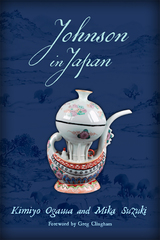 Johnson in Japan
Kimiyo Ogawa
Bucknell University Press, 2021 The study and reception of Samuel Johnson’s work has long been embedded in Japanese literary culture. The essays in this collection reflect that history and influence, underscoring the richness of Johnson scholarship in Japan, while exploring broader conditions in Japanese academia today. In examining Johnson’s works such as the Rambler (1750-52), Rasselas (1759), Lives of the Most Eminent English Poets (1779-81), and Journey to the Western Islands of Scotland (1775), the contributors—all members of the half-century-old Johnson Society of Japan—also engage with the work of other important English writers, namely Shakespeare, Mary Shelley, Jane Austen, and Matthew Arnold, and later Japanese writers, including Natsume Soseki (1867-1916). If the state of Johnson studies in Japan is unfamiliar to Western academics, this volume offers a unique opportunity to appreciate Johnson’s centrality to Japanese education and intellectual life, and to reassess how he may be perceived in a different cultural context.
Published by Bucknell University Press. Distributed worldwide by Rutgers University Press.
Johnsonian Studies, 1887-1950: A Survey and Bibliography
James L. Clifford
University of Minnesota Press, 1951
Johnsonian Studies, 1887-1950 was first published in 1951. Minnesota Archive Editions uses digital technology to make long-unavailable books once again accessible, and are published unaltered from the original University of Minnesota Press editions.
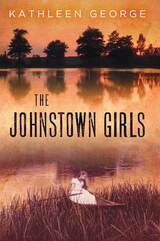 The Johnstown Girls
Kathleen George
University of Pittsburgh Press, 2014 Ellen Emerson may be the last living survivor of the Johnstown flood. She was only four years old on May 31, 1889, when twenty million tons of water decimated her hometown of Johnstown, Pennsylvania. Thousands perished in what was the worst natural disaster in U.S. history at the time. As we witness in The Johnstown Girls, the flood not only changed the course of history, but also the individual lives of those who survived it.
A century later, Pittsburgh Post-Gazette reporters Ben Bragdon and Nina Collins set out to interview 103-year-old Ellen for Ben’s feature article on the flood. When asked the secret to her longevity, Ellen simply attributes it to “restlessness.” As we see, that restlessness is fueled by Ellen’s innate belief that her twin sister Mary, who went missing in the flood, is somehow still alive. Her story intrigues Ben, but it haunts Nina, who is determined to help Ellen find her missing half.
Novelist Kathleen George masterfully blends a history of the Johnstown flood into her heartrending tale of twin sisters who have never known the truth about that fateful day in 1889—a day that would send their lives hurtling down different paths. The Johnstown Girls is a remarkable story of perseverance, hard work, and never giving up hope in the face of seemingly insurmountable odds. It’s also a tribute to the determination and indomitable spirit of the people of Johnstown through one hundred years, three generations, and three different floods.
Joiner
James Whitehead
University of Arkansas Press, 1991
Joining Africa: From Anthills to Asmara
Charles Cantalupo
Michigan State University Press, 2012 This eye-opening personal history tells the story of an American college professor’s twenty-year engagement with a thriving Africa rarely encountered by Western visitors, including an extraordinary connection to poets across the continent. At once adventurous, spiritual, political, dreamlike, and humorous, Joining Africa is a unique documentary of a journey through the continent, including an intense five-year encounter with economically struggling but culturally fertile Eritrea. The Africa presented here is neither a postcolonial study nor an exotic tourist destination. It is rich with the voices of its people, whose languages, Cantalupo argues, have greater potential to effect change than any NGO or high-profile celebrity. In vibrant prose, Cantalupo’s book extends a stirring invitation to reevaluate how we engage—both individually and collectively—with this remarkable part of the world.
Joining the Conversation: Dialogues by Renaissance Women
Janet Levarie Smarr
University of Michigan Press, 2005 Avoiding the male-authored model of competing orations, French and Italian women of the Renaissance framed their dialogues as informal conversations, as letters with friends that in turn became epistles to a wider audience, and even sometimes as dramas. No other study to date has provided thorough, comparative view of these works across French, Italian, and Latin. Smarr's comprehensive treatment relates these writings to classical, medieval, and Renaissance forms of dialogue, and to other genres including drama, lyric exchange, and humanist invective -- as well as to the real conversations in women's lives -- in order to show how women adapted existing models to their own needs and purposes. Janet Levarie Smarr is Professor of Theatre and Italian Studies at the University of California, San Diego.
Joinings and Disjoinings: The Significance of Marital Status in Literature
JoAnna Stephens Mink
University of Wisconsin Press, 1991 Joinings and Disjoinings illustrates the importance of marriage or singleness in short stories and novels and suggests the diverse perspectives the topic can provide on specific works and on analysis of the cultural importance of marriage and marital status. Essays discuss canonical and lesser-known works, providing social, historical, and literary context.
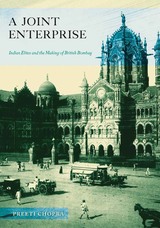 A Joint Enterprise: Indian Elites and the Making of British Bombay
Preeti Chopra
University of Minnesota Press, 2010 It was the era of the Raj, and yet A Joint Enterprise reveals the unexpected role of native communities in the transformation of the urban fabric of British Bombay from 1854 to 1918. Preeti Chopra demonstrates how British Bombay was, surprisingly, a collaboration of the colonial government and the Indian and European mercantile and industrial elite who shaped the city to serve their combined interests.
Chopra shows how the European and Indian engineers, architects, and artists worked with each other to design a city—its infrastructure, architecture, public sculpture—that was literally constructed by Indian laborers and craftsmen. Beyond the built environment, Indian philanthropists entered into partnerships with the colonial regime to found and finance institutions for the general public. Too often thought to be the product of the singular vision of a founding colonial regime, British Bombay is revealed by Chopra as an expression of native traditions meshing in complex ways with European ideas of urban planning and progress.
The result, she argues, was the creation of a new shared landscape for Bombay’s citizens that ensured that neither the colonial government nor the native elite could entirely control the city’s future.
 Joke Farming: How to Write Comedy and Other Nonsense
Elliott Kalan
University of Chicago Press, 2025 The winner of four Emmys, a Peabody, and two Writers Guild Awards (all of which badly need dusting) explains his process for writing comedy without going insane.
Philosophers may debate the meaning of comedy (thankfully keeping them too busy to fall into a life of crime), but the rest of us are more likely to wonder how we can make an audience laugh—or at least, how to entertain our friends and followers. According to award-winning comedy writer Elliott Kalan, we need to stop staring out the window, waiting for hilarious bits to stroll into view, fully formed. What we need is a process to plant their premises, tend to their structure and wording, and ultimately harvest them as funny material. In short, a farm. But for jokes.
In Joke Farming, Kalan explains that it’s easier to write jokes when you have a dependable method for doing so. All jokes, he argues, are built from the same elements: structure, premise, voice, tone, wording, and audience—and these elements can be applied to any comedic genre, from stand-up to sitcoms to satire. Kalan analyzes examples from his own career—including jokes that he wrote (and rewrote and rewrote and rewrote . . . ) as head writer for The Daily Show with Jon Stewart—as well as material from a diverse array of comedians, writers, and filmmakers, highlighting the phrasing, rhythm, and precise details that make their work so dang funny.
Drawing on his experiences in professional writers’ rooms as well as episodes from everyday life, Kalan’s guide to jokes will appeal to aspiring writers, their mentors, comedy fans, and anyone who has to speak at a wedding. Joke Farming points the way toward a writing process that lessens stress and agony and yields more reliable rewards: a surprising tagline, a hilarious word choice, and—most importantly—a bigger laugh from the audience, whoever they may be.
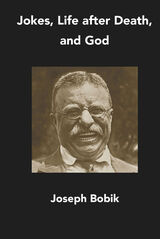 Jokes, Life after Death, and God
Joseph Bobik
St. Augustine's Press, 2020 Jokes, Life after Death, and God has two main tasks: to try to understand exactly what a joke is, and to see whether there are any connections between jokes, on the one hand, and life after death and God, on the other hand. But it pursues other tasks as well, tasks of an ancillary sort.
This book devises a general and comprehensive, but brief, theory of jokes. The author begins with critiques of other writers’ views on the subject. 1) Ted Cohen thinks that such a theory is impossible. 2) Ronald Berk, on the other hand, provides just such a theory. And 3) John Morreall provides a general theory of laughter, which may include some things which can be used in a general theory of jokes. 4) Neil Schaeffer, too, provides a general theory of laughter, which makes a big point out of what he calls the “ludicrous context”; but he does include a chapter on jokes. 5) Christopher Wilson offers a general theory of jokes in which he focuses on form and content. And 6) Thomas Werge, in reflecting on the comic, suggests a general theory of jokes which identifies their matter, form, agents, purposes, and beyond these, the underlying shared relational context, which makes it possible for jokes to arise. 7) Bill Fuller’s message is that there is more funniness coming out of two or more heads than out of one, just as Socrates’ message was that there is more clarity coming out of two or more heads than out of one. 8) Umberto Eco feels that monks should laugh, just as ordinary people do; for laughter not only refreshes our seeking spirits, it also illuminates the truth we seek. 9) Simon Critchley, in his reflections on humor, notes that jokes bring on a kind of everyday anamnesis, that they are anti-story stories, that they are like prayers, that they are like philosophy; and that they require a certain underlying context, which is implicitly recognized by both teller and listener, and which renders possible the tension needed to make the punch line work. 10) Martha Wolfenstein, pursuing a psychological analysis of children’s humor, proposes that the underlying motive for telling jokes remains the same from childhood to adulthood, i.e., to transform painful and frustrating experiences so as to extract pleasure from them; and that the agent or productive cause of jokes is the repressing unconscious, as suggested by Freud.
As John Morreall has argued, neither the Superiority Theory (as in Plato, Aristotle and Hobbes), nor the Relief Theory (as in Spencer and Freud), nor the Incongruity Theory (as in Kant, Schopenhauer and Kierkegaard) appears to work as a general and comprehensive theory. Moreover, these writers talk more about humor and laughter than about jokes. To be sure, a joke is a type of humor. Thus, to say something about humor is to say something, though of a generic sort, about jokes. Similarly, to say something about the laughter caused by humor is to say something, though generic, about the laughter caused by jokes. Most of the authors considered in chapter one are concerned with jokes, and not only with humor as such. Section 11 of chapter one puts together, out of the combined contributions of these authors, what can be considered the beginnings of, some thoughts toward, a general and comprehensive theory of jokes. This task the author illustrates in a concrete way, by looking at individual jokes of different sorts; not, however, without inviting the reader to enjoy these jokes. The author looks particularly at Jewish jokes, Christian jokes, and Islamic jokes (jokes in three major religious traditions), jokes about philosophy and philosophers (philosophers ought to be able to laugh at themselves and at what they do), yo mama jokes (out of a healthy curiosity), Italian jokes and Slovak jokes, all of which makes for a clearer understanding of exactly what a joke is.
The analysis of general theory is then followed by some views on the morality of jokes and joke-telling, and an analysis of the connection between jokes and life after death, on the one hand, and God, on the other. Throughout the book Bobik offers innumerable examples to heighten our understanding and entertain us.
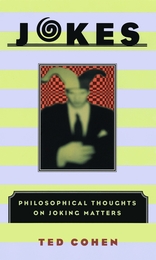 Jokes: Philosophical Thoughts on Joking Matters
Ted Cohen
University of Chicago Press, 1999 Abe and his friend Sol are out for a walk together in a part of town they haven't been in before. Passing a Christian church, they notice a curious sign in front that says "$1,000 to anyone who will convert." "I wonder what that's about," says Abe. "I think I'll go in and have a look. I'll be back in a minute; just wait for me."
Sol sits on the sidewalk bench and waits patiently for nearly half an hour. Finally, Abe reappears.
"Well," asks Sol, "what are they up to? Who are they trying to convert? Why do they care? Did you get the $1,000?"
Indignantly Abe replies, "Money. That's all you people care about."
Ted Cohen thinks that's not a bad joke. But he also doesn't think it's an easy joke. For a listener or reader to laugh at Abe's conversion, a complicated set of conditions must be met. First, a listener has to recognize that Abe and Sol are Jewish names. Second, that listener has to be familiar with the widespread idea that Jews are more interested in money than anything else. And finally, the listener needs to know this information in advance of the joke, and without anyone telling him or her. Jokes, in short, are complicated transactions in which communities are forged, intimacy is offered, and otherwise offensive stereotypes and cliches lose their sting—at least sometimes.
Jokes is a book of jokes and a book about them. Cohen loves a good laugh, but as a philosopher, he is also interested in how jokes work, why they work, and when they don't. The delight at the end of a joke is the result of a complex set of conditions and processes, and Cohen takes us through these conditions in a philosophical exploration of humor. He considers questions of audience, selection of joke topics, the ethnic character of jokes, and their morality, all with plenty of examples that will make you either chuckle or wince. Jokes: more humorous than other philosophy books, more philosophical than other humor books.
"Befitting its subject, this study of jokes is . . . light, funny, and thought-provoking. . . . [T]he method fits the material, allowing the author to pepper the book with a diversity of jokes without flattening their humor as a steamroller theory might. Such a book is only as good as its jokes, and most of his are good. . . . [E]ntertainment and ideas in one gossamer package."—Kirkus Reviews
"One of the many triumphs of Ted Cohen's Jokes-apart from the not incidental fact that the jokes are so good that he doesn't bother to compete with them-is that it never tries to sound more profound than the jokes it tells. . . . [H]e makes you feel he is doing an unusual kind of philosophy. As though he has managed to turn J. L. Austin into one of the Marx Brothers. . . . Reading Jokes makes you feel that being genial is the most profound thing we ever do-which is something jokes also make us feel-and that doing philosophy is as natural as being amused."—Adam Phillips, London Review of Books
"[A] lucid and jargon-free study of the remarkable fact that we divert each other with stories meant to make us laugh. . . . An illuminating study, replete with killer jokes."—Kevin McCardle, The Herald (Glasgow)
"Cohen is an ardent joke-maker, keen to offer us a glimpse of how jokes are crafted and to have us dwell rather longer on their effects."—Barry C. Smith, Times Literary Supplement
"Because Ted Cohen loves jokes, we come to appreciate them more, and perhaps think further about the quality of good humor and the appropriateness of laughter in our lives."—Steve Carlson, Christian Science Monitor
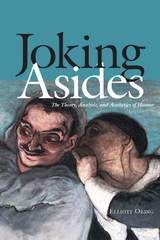 Joking Asides: The Theory, Analysis, and Aesthetics of Humor
Elliott Oring
Utah State University Press, 2016 Nothing in the understanding of humor is as simple as it might seem. In Joking Asides, Elliott Oring confronts the problems of humor, analyzing the key contemporary approaches to its study and addressing controversial topics with new empirical data and insights.
A folklorist drawn to the study of humor, Oring developed his formulation of “appropriate incongruity” as a frame to understand what jokes must do to produce humor. He tests appropriate incongruity against other major positions in the field, including the general theory of verbal humor, conceptual integration theory, benign violation theory, and false-belief theory. Oring draws on the work of scholars from several disciplines—anthropology, folklore, philosophy, psychology, linguistics, and literature—to ask basic questions about the construction and evolution of jokes, untangle the matter of who the actual targets of a joke might be, and characterize the artistic qualities of jokes and joke performances.
Although Oring guides the reader through a forest of jokes and joke genres, this is not a joke book. A major work from a major scholar, Joking Asides is a rigorous exploration of theoretical approaches to jokes and their functions and is filled with disquieting questions, penetrating criticisms, and original observations. Written in a clear and accessible style, this book will prove valuable to any scholar or student who takes matters of jokes and joking seriously.
JOLE vol 31 num 1
The University of Chicago Press
University of Chicago Press Journals, 2013
JOLE vol 31 num 2
The University of Chicago Press
University of Chicago Press Journals, 2013
JOLE vol 31 num 3
The University of Chicago Press
University of Chicago Press Journals, 2013
JOLE vol 31 num 4
The University of Chicago Press
University of Chicago Press Journals, 2013
JOLE vol 31 num S1
The University of Chicago Press
University of Chicago Press Journals, 2013
JOLE vol 32 num 1
The University of Chicago Press
University of Chicago Press Journals, 2014
JOLE vol 32 num 2
The University of Chicago Press
University of Chicago Press Journals, 2014
JOLE vol 32 num 3
The University of Chicago Press
University of Chicago Press Journals, 2014
JOLE vol 32 num 4
The University of Chicago Press
University of Chicago Press Journals, 2014
JOLE vol 33 num 1
The University of Chicago Press
University of Chicago Press Journals, 2015
JOLE vol 33 num 2
The University of Chicago Press
University of Chicago Press Journals, 2015
JOLE vol 33 num 3
The University of Chicago Press
University of Chicago Press Journals, 2015
JOLE vol 33 num 4
The University of Chicago Press
University of Chicago Press Journals, 2015
JOLE vol 33 num S1
The University of Chicago Press
University of Chicago Press Journals, 2015
JOLE vol 34 num 1
The University of Chicago Press
University of Chicago Press Journals, 2016
JOLE vol 34 num 2
The University of Chicago Press
University of Chicago Press Journals, 2016
JOLE vol 34 num 3
The University of Chicago Press
University of Chicago Press Journals, 2016
JOLE vol 34 num 4
The University of Chicago Press
University of Chicago Press Journals, 2016
JOLE vol 34 num S1
The University of Chicago Press
University of Chicago Press Journals, 2016
JOLE vol 34 num S2
The University of Chicago Press
University of Chicago Press Journals, 2016
JOLE vol 35 num 1
The University of Chicago Press
University of Chicago Press Journals, 2017
JOLE vol 35 num 2
The University of Chicago Press
University of Chicago Press Journals, 2017
JOLE vol 35 num 3
The University of Chicago Press
University of Chicago Press Journals, 2017
JOLE vol 35 num 4
The University of Chicago Press
University of Chicago Press Journals, 2017
JOLE vol 35 num S1
The University of Chicago Press
University of Chicago Press Journals, 2017
JOLE vol 36 num 1
The University of Chicago Press
University of Chicago Press Journals, 2018
JOLE vol 36 num 2
The University of Chicago Press
University of Chicago Press Journals, 2018
JOLE vol 36 num 3
The University of Chicago Press
University of Chicago Press Journals, 2018
JOLE vol 36 num 4
The University of Chicago Press
University of Chicago Press Journals, 2018
JOLE vol 36 num S1
The University of Chicago Press
University of Chicago Press Journals, 2018
JOLE vol 37 num 1
The University of Chicago Press
University of Chicago Press Journals, 2019
JOLE vol 37 num 2
The University of Chicago Press
University of Chicago Press Journals, 2019
JOLE vol 37 num 3
The University of Chicago Press
University of Chicago Press Journals, 2019
JOLE vol 37 num 4
The University of Chicago Press
University of Chicago Press Journals, 2019
JOLE vol 37 num S1
The University of Chicago Press
University of Chicago Press Journals, 2019
JOLE vol 37 num S2
The University of Chicago Press
University of Chicago Press Journals, 2019
JOLE vol 38 num 1
The University of Chicago Press
University of Chicago Press Journals, 2020
JOLE vol 38 num 2
The University of Chicago Press
University of Chicago Press Journals, 2020
JOLE vol 38 num 3
The University of Chicago Press
University of Chicago Press Journals, 2020
JOLE vol 38 num 4
The University of Chicago Press
University of Chicago Press Journals, 2020
JOLE vol 39 num 1
The University of Chicago Press
University of Chicago Press Journals, 2021
JOLE vol 39 num S1
The University of Chicago Press
University of Chicago Press Journals, 2021
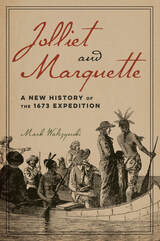 Jolliet and Marquette: A New History of the 1673 Expedition
Mark Walczynski
University of Illinois Press, 2023 Often viewed in isolation, the Jolliet and Marquette expedition in fact took place against a sprawling backdrop that encompassed everything from ancient Native American cities to French colonial machinations. Mark Walczynski draws on a wealth of original research to place the explorers and their journey within seventeenth-century North America. His account takes readers among the region’s diverse Native American peoples and into a vanished natural world of treacherous waterways and native flora and fauna. Walczynski also charts the little-known exploits of the French-Canadian officials, explorers, traders, soldiers, and missionaries who created the political and religious environment that formed Jolliet and Marquette and shaped European colonization of the heartland. A multifaceted voyage into the past, Jolliet and Marquette expands and updates the oft-told story of a pivotal event in American history.
Jolted Images: Unbound Analytic
Pavle Levi
Amsterdam University Press, 2017 Jolted Images brings together a large cast of mainstream and avant-garde cineastes, artists, photographers, comics creators, poets, and more, to reflect on a wide range of phenomena from the realms of cinema and visual culture in the Yugoslav region, broader Europe, and North America. Far from a staid monograph, the book takes a cue from filmmaker Dušan Makavejev, who once wrote that there are times when it is necessary "to jolt art, no matter what the outcome"; to that end, the book infuses its analysis with playful, creative transfiguration of the material at hand.
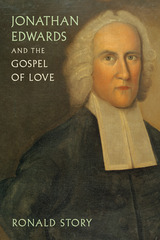 Jonathan Edwards and the Gospel of Love
Ronald Story
University of Massachusetts Press, 2012 Jonathan Edwards has long epitomized the Puritan preacher as fiery scold, fixated on the inner struggle of the soul and the eternal flames of hell. In this book, Ronald Story offers a fundamentally different view of Edwards, revealing a profoundly social minister who preached a gospel of charity and community bound by love.
The first chapters trace Edwards's life and impact, examine his reputation as an intellectual, Calvinist, and revivalist, and highlight the importance for him of the gentler, more compassionate concepts of light, harmony, beauty, and sweetness. Story then explains what Edwards means by the "Gospel of Love"—a Christian faith that is less individual than interpersonal, and whose central feature is the practice of charity to the poor and the quest for loving community in this world, the chief signs of true salvation. As Edwards preached in his sermon "Heaven Is a World of Love," the afterlife itself is social in nature because love is social.
Drawing on Edwards's own sermons and notebooks, Story reveals the minister's belief that divine love expressed in the human family should take us beyond tribalism, sectarianism, provincialism, and nationality. Edwards offers hope, in the manner of Walter Rauschenbusch, Karl Barth, Martin Luther King Jr., and other great "improvers," for the coming of a world without want and war. Gracefully and compellingly written, this book represents a new departure in Edwards studies, revising the long-standing yet misleading stereotype of a man whose lessons of charity, community, and love we need now more than ever.
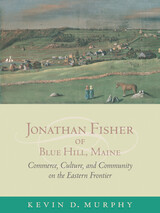 Jonathan Fisher of Blue Hill, Maine: Commerce, Culture, and Community on the Eastern Frontier
Kevin D. Murphy
University of Massachusetts Press, 2010 This book examines the life of Jonathan Fisher (1768–1847), a native of Braintree, Massachusetts, and graduate of Harvard College who moved in his late twenties to Blue Hill, Maine, where he embarked on a multifaceted career as a pioneer minister, farmer, entrepreneur, and artist. Drawing on a vast record of letters, diaries, sermons, drawings, paintings, and buildings, Kevin D. Murphy reconstructs Fisher's story and uses it to explore larger issues of material culture, visual culture, and social history during the early decades of the American republic.
Murphy shows how Fisher, as pastor of the Congregational church in Blue Hill from 1796 to 1837, helped spearhead the transformation of a frontier settlement on the eastern shores of the Penobscot Bay into a thriving port community; how he used his skills as an architect, decorative painter, surveyor, and furniture maker not only to support himself and his family, but to promote the economic growth of his village; and how the fluid professional identity that enabled Fisher to prosper on the eastern frontier could only have existed in early America where economic relations were far less rigidly defined than in Europe.
Among the most important artifacts of Jonathan Fisher's life is the house he designed and built in Blue Hill. The Jonathan Fisher Memorial, as it is now known, serves as a point of departure for an examination of social, religious, and cultural life in a newly established village at the turn of the nineteenth century. Fisher's house provided a variety of spaces for agricultural and domestic work, teaching, socializing, artmaking, and more.
Through the eyes of Jonathan Fisher, we see his family grow and face the challenges of the new century, responding to religious, social, and economic change—sometimes succeeding and sometimes failing. We appreciate how an extraordinarily energetic man was able to capitalize on the wide array of opportunities offered by the frontier to give shape to his personal vision of community.
 Jonathan Odell: The Loyalist Poet of the American Revolution
Cynthia Dubin Edelberg
Duke University Press, 1987 Jonathan Odell's live and writings give us insight into the American Revolution by revealing Loyalist ideology—the ambitious few have led the gullible multitude to slaughter—and he rails against the British military for fighting a war of containment aimed at bringing the rebel leadership to negotiation. This policy effectually trapped the Loyalists between the British army, which ignored them, and the rebels, who despised them.
One of the best-educated of the colonialists, Odell, a physician turned Anglican minister and then writer, lived the gamut of experience: powerful friends sustained him and the British commanders-in-chief Sir William Howe, Henry Clinton, and Sir Guy Carleton employed him; nevertheless, during the war he was a lonely exile ("Tory hunters" forced him from his home in 1775), and, at the end of the war, when his hope for reconciliation between the Loyalists and the Americans came to nothing, he reluctantly emigrated to Canada.
Here is a voice, all but silenced for over two hundred years, that must now be heard if we are to better understand the American Revolution.
 Jonathan Swift: Irish Blow-In
Eugene Hammond
University of Delaware Press, 2016 Jonathan Swift: Irish Blow-in covers the arc of the first half of Jonathan Swift’s life, offering fresh details of the contentment and exuberance of his childhood, of the support he received from his grandmother, of his striking affection for Esther Johnson from the time she was ten years old (his pet name for her in her twenties was “saucebox”), of his precocious entry into English politics with his Contests and Dissensions pamphlet, of his brilliant and much misunderstood Tale of a Tub, and of his naive determination to do well both as a vicar of the small parish of Laracor in Ireland and as a writer for the Tory administration trying to pull England out of debt by ending the war England was engaged in with France.
I do not share with past biographers the sense that Swift had a deprived childhood. I do not share the suspicion that most of Swift’s enmities were politically motivated. I do not feel critical of him because he was often fastidious with his money. I do not think he was insincere about his religious faith. His pride, his sexual interests, his often shocking or uninhibited language, his instinct for revenge – emphasized by many previous biographers – were all fundamental elements of his being, but elements that he either used for rhetorical effect, or that he tried to keep in check, and that he felt that religion helped him to keep in check. Swift had as firm a conviction as did Freud that we are born with wayward tendencies; unlike Freud, though, he saw both religion and civil society as necessary and helpful checks on those wayward tendencies, and he (frequently, but certainly not always) acknowledged that he shared those tendencies with the rest of us. This biography, in two books, Jonathan Swift: Irish Blow-in and Jonathan Swift: Our Dean, will differ from most literary biographies in that it does not aim to show how Swift’s life illuminates his writings, but rather how and why Swift wrote in order to live the life he wanted to live. I have liberally quoted Swift’s own words in this biography because his inventive expression of ideas, both in his public works and in his private letters, was what has made him a unique and compelling figure in the history of literature. I hope in these two books to come closer than past biographies to capturing how it felt to Swift himself to live his life.
Published by University of Delaware Press. Distributed worldwide by Rutgers University Press.
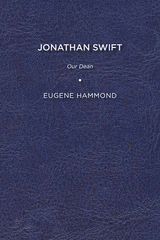 Jonathan Swift: Our Dean
Eugene Hammond
University of Delaware Press, 2016 Jonathan Swift: Our Dean details the political climax of his remarkable career—his writing and publication of The Drapier’s Letters (1724), Gulliver’s Travels (1726), and A Modest Proposal (1729)—stressing the relentless political opposition he faced and the numerous ways, including through his sermons, that he worked from his political base as Dean of St. Patrick’s Cathedral, psychologically as well as physically just outside the Dublin city walls, to attempt to rouse the Irish people to awareness of the ways that England was abusing them. This book faces squarely the likelihood that Swift had a physical affair with Esther Vanhomrigh between 1719 and 1723, and reassesses in the light of that likelihood his conflicting relations with Esther Vanhomrigh and Esther Johnson. It traces the many loving friendships with both men and women in Ireland that sustained Swift during the years when his health gradually failed him, enabling him to continue indefatiguably, both through his writings and his authority as Dean of St. Patrick’s, to contribute to the public welfare in the face of relentless British attempts to squeeze greater and greater profits out of their Irish colony. Finally, it traces how Swift’s political indignation led to his treating many people, friends and enemies, cruelly during the 1730s, even while his humor and his ability to make and attract new friends sustained themselves until his memory finally failed him in 1742. This biography, in two books, Jonathan Swift: Irish Blow-in and Jonathan Swift:Our Dean, comes closer than past biographies to capturing how it felt to Swift himself to live his life.
Published by University of Delaware Press. Distributed worldwide by Rutgers University Press.
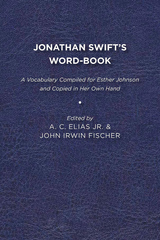 Jonathan Swift's Word-Book: A Vocabulary Compiled for Esther Johnson and Copied in Her Own Hand
A. C. Elias
University of Delaware Press, 2017 This Word-Book is presumably the only work of Jonathan Swift’s not in print, until now. Since the 1690s, Swift had been formulating a list of words and definitions for his protégé Esther Johnson, beginning with terms from the Book of Common Prayer. His was apparently an ongoing list, kept rather haphazardly, with open spaces for adding new words. About 1710, when Swift was in London, Johnson, in Dublin, set out to formalize the dictionary, copying out Swift’s words and definitions to make an orderly and careful book with no blank spaces. Probably in 1713, when Swift returned to Ireland, Johnson presented her Word-Book to him, but his school-masterly corrections of her work may have offended her. After Johnson’s death in 1728, Swift gave the Word-Book to their mutual friend, Elizabeth Sican. It was passed down over generations, until in 1976, the young American Swiftian A. C. Elias, Jr., bought it, intending to edit it in his old age. Before his early death in 2008, Elias asked John Fischer to assume the challenge of bringing the book into print. Fischer took on the task until 2015, when he too passed away, after which his wife Panthea Reid completed the task. This volume includes illustrations from the original book, a transcript of it with schematic indications of Swift’s corrections, as well as essays and appendices by Fischer and Elias tracing provenance, exploring the social and psychological milieu in which the book was written, and tracking Swift’s work as a lexicographer.
Published by University of Delaware Press. Distributed worldwide by Rutgers University Press.
Jonson's Moral Comedy
Alan C. Dessen
Northwestern University Press, 1971 Alan C. Dessen's Johnson's Moral Comedy asks the question about the character of Ben Jonson’s comedies: were they sentimental or were they didactic and moralistic comedies? Dessen’s groundbreaking text remains significant for its contribution to early conversations about Jonsonian comedy, as well as its contribution to the practice of ethical criticism of literature. In his close readings of Jonson’s plays, he offers a model of engaging in such critical practice.
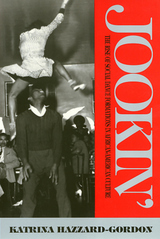 Jookin': The Rise of Social Dance Formations in African-American Culture
Katrina Hazzard-Gordon
Temple University Press, 1992 Katrina Hazzard-Gordon offers the first analysis of the development of the jook—an underground cultural institution created by the black working class—together with other dance arenas in African-American culture. Beginning with the effects of African slaves’ middle passage experience on their traditional dances, she traces the unique and virtually autonomous dance culture that developed in the rural South. Like the blues, these secular dance forms and institutions were brought north and urbanized by migrating blacks. In northern cities, some aspects of black dance became integrated into white culture and commercialized. Focusing on ten African-American dance arenas from the period of enslavement to the mid-twentieth century, this book explores the jooks, honky-tonks, rent parties, and after-hours joints as well as the licensed membership clubs, dance halls, cabarets, and the dances of the black elite. Jook houses emerged during the Reconstruction era and can be viewed as a cultural response to freedom. In the jook, Hazzard-Gordon explains, an immeasurable amount of core black culture including food, language, community fellowship, mate selection, music, and dance found a sanctuary of expression when no other secular institution flourished among the folk. The jook and its various derivative forms have provided both entertainment and an economic alternative (such as illegal lotteries and numbers) to people excluded from the dominant economy. Dances like the Charleston, shimmy, snake hips, funky butt, twist, and slow drag originated in the jooks; some can be traced back to Africa. Social dancing links black Americans to their African past more strongly than any other aspect of their culture. Citing the significance of dance in the African-American psyche, this study explores the establishments that nurtured ancestral as well as communal links for African-Americans, vividly describing black dances, formal rituals, such as debutante balls, and the influence of black dance on white culture.
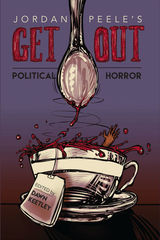 Jordan Peele's Get Out: Political Horror
Edited by Dawn Keetley
Ohio State University Press, 2020 Jordan Peele’s Get Out: Political Horror is a collection of sixteen essays devoted to exploring Get Out’s roots in the horror tradition and its complex and timely commentary on twenty-first-century US race relations. The first section, “The Politics of Horror,” traces the influence of the gothic and horror tradition on Peele’s film, from Shakespeare’s Othello, through the female gothic and Ira Levin’s Rosemary’s Baby and The Stepford Wives, to the modern horror film, including the zombie, rural, suburban, and body-swap subgenres of horror. The second section, “The Horror of Politics,” takes up Get Out’s varied political interventions—notably its portrayal of the continuation of slavery and the deformation of the black body and mind in white, so-called progressive America. Contributors address Peele’s film alongside African American figures such as Nat Turner, W. E. B. Du Bois, and James Baldwin. Taken together, the essays illuminate how Get Out stands as both a groundbreaking intervention in the horror tradition as well as a devastating unmasking of racism in the contemporary United States.
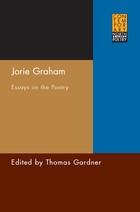 Jorie Graham: Essays on the Poetry
Edited by Thomas Gardner
University of Wisconsin Press, 2005 Jorie Graham is one of the most important American poets now writing. This first book-length study brings together thirteen previously published essays and review essays by many of the major critics currently interested in her work and five new essays commissioned for this volume. Commenting on each of Graham's eight poetry collections, these essays encompass the range of critical thought that her work has attracted, both surveying it broadly and engaging closely with individual poems.
These essays identify three broad concerns that run through each of her strikingly different volumes of poems: the movement of the mind in action, the role of the body in experiencing the world, and the pressures of material conditions on mind and body alike. Gardner both shows how Graham is being read at the moment and charts new areas of investigation likely to dominate thinking about her over the next decade. This collection is sure to become the crucial first step for all future work on Graham and on American poetry of the last two decades.
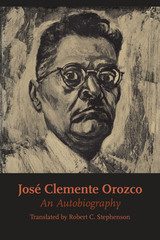 José Clemente Orozco: An Autobiography
By José Clemente Orozco; Translated by Robert C. Stephenson; Introduction by John Palmer Leeper
University of Texas Press, 1962 The artistic eminence of José Clemente Orozco (1883–1949) is such that he has been called “the greatest painter the Americas have produced.” In his Autobiography he also attains literary distinction. He is a writer who recounts the history of his period from a personal point of view and yet scarcely mentions himself. He is an observer who writes about the history of his country and of his country’s art, yet makes his own character implicit in the narrative. The character that emerges is charming. It is that of a man strong but retiring, sharply critical of what he disapproves yet generous in praise of what he admires, decided in his views but modest in his assumptions and given to understatement in describing his own activities, averse to war and political struggle yet eager for conflict of ideas, always dedicated to the welfare of humanity. Through the details of day-by-day living, he presents the panorama of the Mexican Revolution and of events in other parts of the world to which he traveled. His is a personal story of the Revolution, giving his reactions (as those of any common man) to the barbarities of war: “Insolent leaders, inflamed with alcohol, taking whatever they wanted at pistol point. . . . By night in dark streets the sound of gunplay, followed by screams, blasphemies, and vile insults. Breaking windows, sharp blows, cries of pain, and shots again.” Orozco’s ability, as a painter, to see the details and to sense the mood of a place is apparent in his word pictures of the places he visited: “After six in the evening Paris is an immense brothel.” “London was like the seat of a noble family which had been exceedingly rich but had lost its fortune.” “Old, old Montmartre [is] a moldering cadaver . . .” Orozco also makes some penetrating observations on art itself. Although he emphasizes individuality and freedom from tradition in art, he abhors unschooled art, especially such extremes as primitive Impressionism and other groups that lack instruction in the general principles of art, in technique, in theory of color, in perspective. He says ironically of the artistically uneducated: “Blessed are the ignorant and the imbecile, for theirs is the supreme glory of art! Blessed are the idiots and the cretins, for masterpieces of painting shall issue from their hands!” Orozco believes in education, not only for the artists but for their public. Taste in art can come only through understanding of the purpose and the techniques of art—through knowledge. Without training, public taste “mostly likes sugar, honey, and candy. Diabetic art. The greater the amount of sugar, the greater the—commercial—success.”
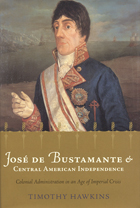 José de Bustamante and Central American Independence: Colonial Administration in an Age of Imperial Crisis
Timothy Hawkins
University of Alabama Press, 2004 The first full-length study of a significant figure of the Spanish Enlightenment
Latin American independence histories of the last 150 years have tended to stereotype Captain General Bustamante, governor of the Spanish colony of Guatemala from 1811 to 1818, as a tyrannical arch-villain who personified colonial oppression. Timothy Hawkins, in contrast, examines Bustamante and his administration within the context of preservation of empire, the effort by colonial officials and partisans to maintain the integrity of the Spanish empire in spite of internal and external unrest. Based on extensive primary research in the archives of Guatemala, Mexico, and Spain, Hawkins’s approach links the Central American experience to that of areas such as Peru, Venezuela, and Mexico, that also responded equivocally and haphazardly to rebellious uprisings against colonial rule. While conceding that Bustamante’s role in the suppression of unrest turned him into one of the more controversial figures in Latin American history, Hawkins argues that the Bustamante administration should not be seen as an isolated and perverse case of Spanish repression but as an example of a relatively successful, if short lived, campaign by Spain to preserve its empire.
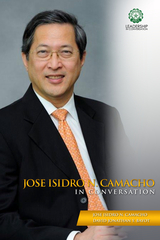 Jose Isidro N. Camacho: In Conversation
Jose Isidro N. Camacho
Sussex Academic Press, 2022 The Leadership in Conversation series is a platform designed to engage readers to a conversation with exemplary minds in leadership and management across disciplines. As the world experiences sweeping socio-economic, technological, and affective change, thoughtful leaders and discerning visionaries will provide the necessary strategies to meet new challenges. A primary aim of the conversations is to enthuse and motivate the wider reading public. Learning about the life-path of these leaders will inspire readers to engage more fully and successfully in their own professions and life-goals. As the leading subject of this volume unravels his story, the biography of his ideas, and the trajectory of his life-path and profession as a financial executive, a collector, and a total leader, readers will see how personal goals act within the wider frame of international business leadership. An annotated time-line section within the book puts this personal story in a broader economic setting.
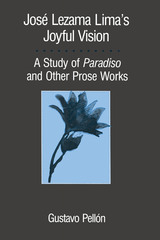 José Lezama Lima's Joyful Vision: A Study of Paradiso and Other Prose Works
By Gustavo Pellón
University of Texas Press, 1989 Cuba’s José Lezama Lima became the most controversial figure in the flowering of the Latin American novel with the 1966 publication of Paradiso. Hailed as a seminal writer of breathtaking originality by Julio Cortázar, Octavio Paz, and Mario Vargas Llosa, Lezama was also attacked by the Castro regime and others for his stylistic obscurity, erotic descriptions, and violation of literary norms. Indeed, his experimental fiction, written on the very boundaries of the novelistic genre, resists classification. José Lezama Lima’s Joyful Vision, a much-needed critical study of Paradiso, Oppiano Licario, and Lezama’s essays, is thus an exploration in reading, one that highlights and preserves the essential and persistent contradictions in Lezama’s theory and practice of literature. Gustavo Pellón focuses his study on Lezama’s search for equilibrium, clarifying such oppositions in Lezama’s writings as the mystical quest for illumination through obscurity, the calculated cultivation of naïveté, the Proust-like fascination with yet ultimate condemnation of homosexuality, and a modernist (even postmodernist) narrative style that conveys a mystical (essentially medieval) worldview. Above all, Pellón shares his wonder at Lezama who, in an age of pessimism, maintained his joyful vision of art and existence.
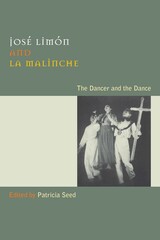 José Limón and La Malinche: The Dancer and the Dance
Edited by Patricia Seed
University of Texas Press, 2008 José Limón (1908-1972) was one of the leading figures of modern dance in the twentieth century. Hailed by the New York Times as "the finest male dancer of his time" when the José Limón Dance Company debuted in 1947, Limón was also a renowned choreographer who won two Dance Magazine Awards and a Capezio Dance Award, two of dance's highest honors. In addition to directing his own dance company, Limón served as artistic director of the Lincoln Center's American Dance Theater and also taught choreography at the Juilliard School for many years. In this volume, scholars and artists from fields as diverse as dance history, art history, Mesoamerican ethnohistory, Mexican American studies, music studies, and Mexican history come together to explore one of José Limón's masterworks, the ballet La Malinche. Offering many points of entry into the dance, they examine La Malinche from various angles, such as Limón's life story and the influence of his Mexican heritage on his work, an analysis of the dance itself, the musical score composed by Norman Lloyd, the visual elements of props and costumes, the history and myth of La Malinche (the indigenous woman who served the Spanish conquistador Hernán Cortés as interpreter and mistress), La Malinche's continuing presence in Mexican American culture, and issues involved in a modern restaging of the dance. Also included in the book is a DVD written and directed by Patricia Harrington Delaney that presents the ballet in its entirety, accompanied by expert commentary that sets La Malinche within its artistic and historical context.
 José María Arguedas: Reconsiderations for Latin American Studies
Ciro A. Sandoval
Ohio University Press, 1997 José María Arguedas (1911–1969) is one of the most important authors to speak to issues of the survival of native cultures. José María Arguedas: Reconsiderations for Latin American Cultural Studies presents his views from multiple perspectives for English-speaking audiences for the first time. The life and works of José María Arguedas reflect in a seminal way the drama of acculturation and transculturation suffered not only by what we think of as the indigenous and mestizo cultures of Peru, but by other Latin American societies as well. Intricately reflecting his pluricultural and bilingual life experience, Arguedas’s illuminating poetic visions of Andean culture cross multidisciplinary borders to transfigure pedagogical and social practices. Few texts convey the complexity and contradictions of an Andean cosmopolitanism with the intense accuracy of Arguedas’s anthropological, ethnographic essays and literary writings. The ramifications of Arguedas’s cultural critiques have yet to be assessed, particularly as a response to the disruptive forces of modernity, acculturation, and essential identity. José María Arguedas was a Peruvian ethnographer, anthropologist, folklorist, poet, and novelist. He based his novels and stories on the life and outlook of the Quechua-speaking Indians and was a pioneer of modern Quechua poetry. The present anthology brings his work to the attention of broader audiences by pulling together diverse scholarly views on Arguedas’s aesthetic and multicultural contributions to the contemporary and political archipelago. It is a synthesis of his views on cultural change as it impinges upon considerations and theories of Latin American cultural studies.
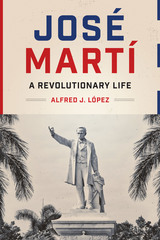 José Martí: A Revolutionary Life
By Alfred J. López
University of Texas Press, 2014 José Martí (1853–1895) was the founding hero of Cuban independence. In all of modern Latin American history, arguably only the “Great Liberator” Simón Bolívar rivals Martí in stature and legacy. Beyond his accomplishments as a revolutionary and political thinker, Martí was a giant of Latin American letters, whose poetry, essays, and journalism still rank among the most important works of the region. Today he is revered by both the Castro regime and the Cuban exile community, whose shared veneration of the “apostle” of freedom has led to his virtual apotheosis as a national saint. In José Martí: A Revolutionary Life, Alfred J. López presents the definitive biography of the Cuban patriot and martyr. Writing from a nonpartisan perspective and drawing on years of research using original Cuban and U.S. sources, including materials never before used in a Martí biography, López strips away generations of mythmaking and portrays Martí as Cuba’s greatest founding father and one of Latin America’s literary and political giants, without suppressing his public missteps and personal flaws. In a lively account that engrosses like a novel, López traces the full arc of Martí’s eventful life, from his childhood and adolescence in Cuba, to his first exile and subsequent life in Spain, Mexico City, and Guatemala, through his mature revolutionary period in New York City and much-mythologized death in Cuba on the battlefield at Dos Ríos. The first major biography of Martí in over half a century and the first ever in English, José Martí is the most substantial examination of Martí’s life and work ever published.
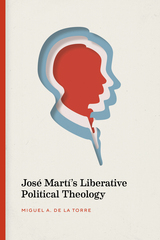 José Martí’s Liberative Political Theology
Miguel A. De La Torre
Vanderbilt University Press, 2021 José Martí's Liberative Political Theology argues that Martí's religious views, which at first glance might appear outdated and irrelevant, are actually critical to understanding his social vision. During a time in which the predominant philosophical view was materialistic (e.g., Darwin, Marx), Martí sought to reconcile social and political trends with the metaphysical, believing that ignoring the spiritual would create a soulless approach toward achieving a liberative society. As such, Martí used religious concepts and ideas as tools that could bring forth a more just social order. In short, this book argues Martí could be considered a precursor to what would come to be called liberation theology.
Miguel De La Torre has authored the most comprehensive text written thus far concerning Martí's religious views and how they affected his political thought. The few similar texts that exist are written in Spanish, and most of them romanticize Martí's spirituality in an attempt to portray him as a “Christian believer.” Only a handful provide an academic investigation of Martí's theological thought based solely on his writings, and those concentrate on just one aspect of Martí's religious influences. José Martí's Liberative Political Theology allows for mutual influence between Martí's political and religious views, rather than assuming one had precedence over the other.
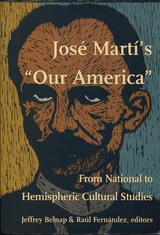 José Martí's Our America: From National to Hemispheric Cultural Studies
Jeffrey Belnap and Raúl Fernández, eds.
Duke University Press, 1998 Considerable attention has been given to Cuban poet, essayist, and activist José Martí’s 1891 essay “Nuestra América,” but relatively little has been paid to the rest of the journalistic work that Martí produced during his fourteen-year exile in the United States. In José Martí’s Our America, Jeffrey Belnap and Raúl Fernández present essays from Latin American, Caribbean, and U.S.-based scholars who consider Martí’s rich and underexplored body of work and position Martí as an emblem of New American studies. A Cuban exile from 1881 to 1895, Martí was a correspondent writing in New York for various Latin American newspapers. Grasping the significance of rising U.S. imperial power, he came to understand the Americas as a complex system of kindred—but not equal—national formations whose cultural and political integrity was threatened by the overbearing aggressiveness of the United States. This collection explores how in his journalistic work Martí critiques U.S. racism, imperialism, and capitalism; warns Latin America of impending U.S. geographical, cultural, and economic annexation; and calls for recognition of the diversity of America’s cultural voices. Reinforcing Martí’s hemispheric vision with essays by a wide range of scholars who investigate his analysis of the United States, his significance as a Latino outsider, and his analyses of Latin American cultural politics, this volume explores the affinities between Martí’s thought and current reexaminations of what it means to study America. José Martí’s Our America offers a new understanding of Martí’s ambiguous and problematic relation with the United States and will engage scholars and students in American, Latin American, and Latino studies as well as those interested in cultural, postcolonial, gender, and ethnic studies. Contributors. Jeffrey Belnap, Raúl Fernández, Ada Ferrer, Susan Gillman, George Lipsitz, Oscar Martí, David Noble, Donald E. Pease, Beatrice Pita, Brenda Gayle Plummer, Susana Rotker, José David Saldívar, Rosaura Sánchez, Enrico Mario Santí, Doris Sommer, Brook Thomas
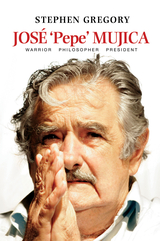 Jose 'Pepe' Mujica: Warrior Philosopher President
Stephen Gregory
Sussex Academic Press, 2022 Toward the end of his administration (2010-2015), then Uruguayan President Jose 'Pepe' Mujica made headlines across the world with a couple of unusual speeches at United Nations assemblies in Rio de Janeiro and New York that were heatedly anti-capitalist, anti-consumerist, anti-globalisation and anti-climate change - all fuelled by a libertarian socialist concept of freedom. This Sancho Panza-like figure was not only one of the few presidents of developing countries not to have somehow got personally rich while in government, but was known to live modestly as a practicing farmer and gave away two-thirds of his salary to his left-wing political organisation and to social housing projects. Even more bizarre was the fact that he had become president of the country whose government he had tried to overthrow forty years earlier in a revolutionary guerrilla war, an exploit for which he spent over a decade in military jails after being shot, severely wounded and tortured. This book is an introduction to the politics and philosophy of an unrepentant permanent militant whose evolution took him from defeated guerrilla warrior to successful presidential candidate without inconsistencies or betrayals, whatever his adversaries from right and left may claim. The study sets Mujica not only in his Uruguayan and Latin American context but also within an International Left that is coming out of mourning for the loss of so-called existing socialism as they search for solutions to lessen the damage done by rampant neoliberal economics and to find creative alternatives. Stephen Gregory's polemic is essential reading for all those interested in discovering Uruguay's unique position in a Latin America where the political right is in decline and leftist governments are moving to the middle ground.
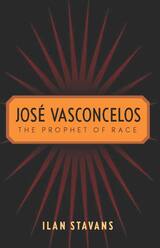 José Vasconcelos: The Prophet of Race
Stavans, Ilan
Rutgers University Press, 2011 Mexican educator and thinker Jose Vasconcelos is to Latinos what W.E.B. Du Bois is to African Americans a controversial scholar who fostered an alternative view of the future. In Josè Vasconcelos: The Prophet of Race, his influential 1925 essay, "Mestizaje" key to understanding the role he played in the shaping of multiethnic America—is for the first time showcased and properly analyzed. Freshly translated here by John H. R. Polt, "Mestizaje" suggested that the Brown Race from Latin America was called to dominate the world, a thesis embraced by activists and scholars north and south of the Rio Grande. Ilan Stavans insightfully and comprehensively examines the essay in biographical and historical context, and considers how many in the United States, especially Chicanos during the civil rights era, used it as a platform for their political agenda. The volume also includes Vasconcelos's long-forgotten 1926 Harris Foundation Lecture at the University of Chicago, "The Race Problem in Latin America," where he cautioned the United States that rejecting mestizaje in our own midst will ultimately bankrupt the nation.
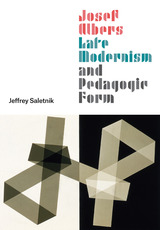 Josef Albers, Late Modernism, and Pedagogic Form
Jeffrey Saletnik
University of Chicago Press, 2022 An incisive analysis of the pedagogy of influential artist and teacher Josef Albers.
An extraordinary teacher whose influence continues today, Josef Albers helped shape the Bauhaus school in Germany and established the art and design programs at Black Mountain College in North Carolina and Yale University. His books about color theory have informed generations, and his artworks are included in the canon of high-modernist non-representational art. The pedagogy Albers developed was a dynamic approach to teaching that transcended the modernist agendas and cultivated a material way of thinking among his students.
With this book, Jeffrey Saletnik explores the origins of Albers’s teaching practices and their significance in conveying attitudes about form, material, and sensory understanding to artists Eva Hesse and Richard Serra. He demonstrates how pedagogy is a framework that establishes the possibility for artistic discourse and how the methods through which artists learn are manifested in their individual practices. Tracing through lines from Albers’s training in German educational traditions to his influence on American postwar art, Josef Albers, Late Modernism, and Pedagogic Form positions Albers’s pedagogy as central to the life of modernism.
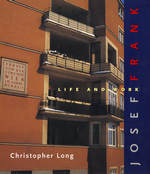 Josef Frank: Life and Work
Christopher Long
University of Chicago Press, 2002 Architect, designer, and theorist Josef Frank (1885-1967) was known throughout Europe in the 1920s as one of the continent's leading modernists. Yet despite his important contributions to the development of modernism, Frank has been largely excluded from histories of the movement. Josef Frank: Life and Work is the first study that comprehensively explores the life, ideas, and designs of this complex and controversial figure.
Educated in Vienna just after the turn of the century, Frank became the leader of the younger generation of architects in Austria after the First World War. But Frank fell from grace when he emerged as a forceful critic of the extremes of modern architecture and design during the early 1930s. Dismissing the demands for a unified modern style, Frank insisted that it was pluralism, not uniformity, that most characterized life in the new machine age. He called instead for a more humane modernism, one that responded to people's everyday needs and left room for sentimentality and historical influences. He was able to put these ideas into practice when, in 1933, he was forced to leave Vienna for Sweden. There his work came to define Swedish (or Scandinavian) modern design. For more than thirty years he was the chief designer for the Stockholm furnishings firm Svenskt Tenn, producing colorful, cozy, and eclectic designs that provided a refreshing alternative to the architectural mainstream of the day and presaged the coming revolt against modernism in the 1960s.
In this sensitive study of one of the twentieth century's seminal architects and thinkers, Christopher Long offers new insight into Josef Frank's work and ideas and provides an important contribution to the understanding of modernist culture and its history.
 Josef Fuchs on Natural Law
Mark Graham
Georgetown University Press, 2002 Appointed by Pope John XXIII to the Pontifical Commission on Population, Family, and Birth, Fuchs ultimately found himself disappointed in his three years of service and spent the next thirty years exploring a broad array of issues pivotal to a reconstruction of Roman Catholic natural law theory. This is the first full-length analysis of Fuchs's efforts. Beginning historically by looking at Fuchs's writings and beliefs before the Pontifical Commission appointment, including his defense of natural law during the "situation ethics" debates of the 50s and 60s, the concept of personal salvation, and the status of "nature" and "human nature," Graham moves to the intellectual conversion that inspired Fuchs to reconsider his concepts following the commission appointment. From there, Graham engages in a sustained critique of Fuchs's natural theory, addressing both the strengths and weaknesses to be found there and suggest possible avenues of development that would make a positive contribution to the ongoing quest to rehabilitate the Roman Catholic natural law theory that continues to dominate the landscape of moral theology today.
 Joseph: An Epic
Zachary McLeod Hutchins
University of Illinois Press, 2025 A quintessentially American saga, the life of Joseph Smith offers believers and non-believers alike an epic narrative that inhabits both grounded history and a heavenly sphere of action. Zachary McLeod Hutchins renders Smith’s early life as a poetic narrative in two parts. The first introduces a very human Joseph and his youthful encounter with demonic powers seeking to prevent any communication with heaven. Following his First Vision, the teenaged prophet is charged by the angel Moroni to retrieve and translate a sacred record inscribed on gold plates. The second part picks up the story four years later, as Joseph marries Emma Hale and undertakes the plates’ translation. Hutchins supplies a fictionalized excerpt from that translation, The Book of Lehi, and details Joseph’s efforts to organize his growing band of followers, concluding on a note of contentment at odds with the tumultuous times to come in Smith’s final years. An innovative perspective on Smith’s early exploits, Joseph: An Epic reinterprets the origin story of a religious seeker and the faith he created.
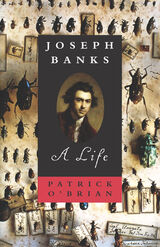 Joseph Banks: A Life
Patrick O'Brian
University of Chicago Press, 1997 One of our greatest writers about the sea has written an engrossing story of one of history's most legendary maritime explorers. Patrick O'Brian's biography of naturalist, explorer and co-founder of Australia, Joseph Banks, is narrative history at its finest. Published to rave reviews, it reveals Banks to be a man of enduring importance, and establishes itself as a classic of exploration.
"It is in his description of that arduous three-year voyage [on the ship Endeavor] that Mr. O'Brian is at his most brilliant. . . . He makes us understand what life within this wooden world was like, with its 94 male souls, two dogs, a cat and a goat."—Linda Colley, New York Times
"An absorbing, finely written overview, meant for the general reader, of a major figure in the history of natural science."—Frank Stewart, Los Angeles Times
"[This book is] the definitive biography of an extraordinary subject."—Robert Taylor, Boston Globe
"His skill at narrative and his extensive knowledge of the maritime history . . . give him a definite leg up in telling this . . . story."—Tom Clark, San Francisco Chronicle
 Joseph Carter Corbin: Educator Extraordinaire and Founder of the University of Arkansas at Pine Bluff
Gladys Turner Finney
Butler Center for Arkansas Studies, 2017 Having operated now for more than 140 years, the University of Arkansas at Pine Bluff (UAPB) was founded in 1875 as Branch Normal College by Joseph Carter Corbin, a native of Ohio and the son of former slaves. Corbin, who had a classical education, was the first African American superintendent of public education in Arkansas and literally built the school from the ground up. There was a desperate need for teachers in Arkansas, as there was a great desire for education by former slaves who had been prohibited from learning to read and write. Corbin himself cleared the land that would soon house the college and then set about to create a school that would produce the first African American teachers following the Reconstruction years. For almost three decades, he worked tirelessly on behalf of Arkansas’s black community to meet the need for educators. In the early days, Corbin worked both as the president and the janitor so that he could control costs and keep the school going. He often waived matriculation fees and other expenses to allow impoverished students the opportunity to graduate and become qualified to teach throughout Arkansas. Although he might not have realized it at the time, Corbin was a member of the so-called aristocrats of color, the African American elite of national prominence and a group that included such luminaries as Booker T. Washington. Corbin was a true giant in the history of education in Arkansas. His story, told by a former UAPB student, is monumental for the scope of what one man was able to accomplish.
 Joseph Conrad at Mid-Century: Editions and Studies, 1895-1955
Kenneth A. Lohf and Eugene P. Sheehy
University of Minnesota Press, 1957
Joseph Conrad at Mid-Century was first published in 1957. Minnesota Archive Editions uses digital technology to make long-unavailable books once again accessible, and are published unaltered from the original University of Minnesota Press editions.
Published in the centennial year of Joseph Conrad's birth, this is the first comprehensive bibliography of the writings by and about this important author. Though there is a current revival of interest in Conrad's work, criticism and scholarship devoted to this celebrated novelist and short story writer have lagged behind that of other major twentieth-century authors. This compendium of data about the growing body of Conrad literature should stimulate further interest by bringing together a vast amount of reference information that has been widely scattered until now.
The bibliography lists works by Conrad, including serializations, significant translations, and film adaptations, and writings about Conrad, including book and periodical material in western languages, appearing from 1895, the year of publication of Almayer's Folly, through 1955. There are a total of 1200 numbered entries containing approximately 3000 items.
In the first section, devoted to Conrad's works, the enumeration of English and American editions is followed by the listing of translations. Most of Conrad's essays and many of his novels were serialized before they appeared in book form, and these serializations are listed here also.
The second section lists the studies of Conrad's life and works, as published in books, pamphlets, periodical articles, and reviews. Data are included on bibliographies, commemorative issues of periodicals, criticism of individual works and of Conrad's work in general, and parodies and other miscellany.
 Joseph Fielding Smith: A Mormon Theologian
Matthew Bowman
University of Illinois Press, 2024 In the early and mid-twentieth century, Joseph Fielding Smith’s (1876–1972) life as a public historian and theologian shaped the religious worldview of generations of Latter-day Saints. Matthew Bowman examines Smith’s ideas and his place in American religious history. Smith achieved position and influence at a young age, while his theories about the age of the earth and the falseness of evolutionary theory brought fame and controversy. As Bowman shows, Smith’s strong identity as a Saint influenced how he blended Protestant fundamentalist thought into his distinctly LDS theological views. Bowman also goes beyond Smith’s well-known conservatism to reveal him as an important thinker engaged with the major religious questions of his time. Incisive and illuminating, Joseph Fielding Smith examines the worldview and development of an influential theologian and his place in American religious and intellectual history.
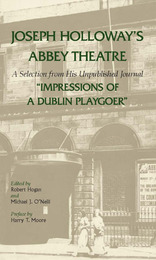 Joseph Holloway's Abbey Theatre: A Selection from His Unpublished Journal "Impressions of a Dublin Playgoer"
Edited by Robert Hogan and Michael J. O'Neill. Preface by Harry T. Moore
Southern Illinois University Press, 1967 Until his death in 1944, Holloway attended almost every performance of the Abbey Theatre and daily recorded in his journal his reactions to plays and players and his comments about and conversations with literary and theatrical people. From the journal’s 221 bulky volumes, housed in the National Library of Ireland, Mr. Hogan and Mr. O’Neill have compiled this book of extracts from the approximately 25,000,000 words written by the Irishman. The years from 1899 to 1926 were chosen because they are generally considered to be the significant ones for the Abbey Theatre: the year of its founding to the production of Sean O’Casey’s The Plough and the Stars, which caused a riot in the theatre. Mr. Holloway attended every play during these years, as well as many rehearsals, and talked with nearly everybody who had anything to do with the theatre. This journal reflects the tensions, feuds, and anguish that produced one of the great theatres of modern times.
The meticulous display of minute detail makes Joseph Holloway’s Abbey Theatre imperative reading for the student of modern theatre, particularly since its character as a daily account permits ready checking of dates listed in previous works about the Irish National Theatre.
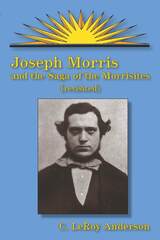 Joseph Morris: and the Saga of the Morrisites Revisited
C. Leroy Anderson
Utah State University Press, 2010 LeRoy Anderson in 1981 first published, under the title For Christ Will Come Tomorrow, his definitive study of a charismatic, millenarian prophet and the Church of Jesus Christ of the Most High. He told there of a Mormon posse’s 1862 attack on the Morrisite compound, killing Joseph Morris, and of the continuing Morrisite movement, which survived into the mid-twentieth century. In this newly revised edition, Anderson revisits his subject by referring to more recently discovered documents, considering other scholars’ continuing work on Morris’s sect and related subjects, and examining a 1980s messianic sect that claimed a direct connection to the Morrisites. New documentary sources include a holograph “History of George Morris,” written by Joseph Morris’s brother, which Anderson quotes at length. What was once a little-studied subject has since received attention from a number of scholars. Anderson references such current work on Mormon schismatic movements and broader subjects, much of which drew on his work. Perhaps the book’s most interesting and unintended influence was on that obscure 1980s messianic sect, in Montana, which learned of Morris through Joseph Morris and the Saga of the Morrisites.
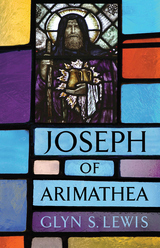 Joseph of Arimathea
Glyn S. Lewis
Westholme Publishing, 2017 Exploring the legend of the man who brought Christianity to the British Isles
“This author testifieth Joseph of Arimathea to be the first preacher of the word of God within our realms. Long after that, when Austin came from Rome, this our realm had bishops and priests there-in, as is well known to the learned of our realm.”—Elizabeth I, in a 1559 letter to Roman Catholic bishops on the precedence of the Church of England
The name Joseph of Arimathea is generally well known, either from the accounts in each of the New Testament Gospels that tell of his providing a tomb for the burial of Jesus; from his depictions in medieval and Renaissance art; from his associations with the Holy Grail that later found greater expression in medieval Arthurian stories; and even from the story that has endured in western Britain that as a trader in tin, copper, and lead, he had traveled often to the region—and with him came the Christian religion. These stories are strongly rooted, despite the lack of impeccable source material—so much so that Elizabeth I used Joseph of Arimathea as proof that the Church of England predated the Catholic church in her country. In Joseph of Arimathea Glyn S. Lewis brings these fragments together in order to provide as fully as is possible what we can infer about this first-century apostle.
The author first discusses Arimathea, a town that has yet to be positively identified. He then reviews the accounts of Joseph’s entombment of Jesus that appear in each of the four Gospels. From these earliest references, the author next consults the literary and oral tradition evidence of Joseph’s passage by ship to the south of France among a group of fugitives escaping persecution for being Christians, and his early visits to Britain as a trader in precious ores. These voyages are said to have brought him to the area around Glastonbury, which became a flourishing monastery in the Middle Ages. Whether or not Joseph of Arimathea visited Britain, his story remains an enthralling and fascinating mystery.
 Joseph Schumpeter’s Two Theories of Democracy
John Medearis
Harvard University Press, 2001 This book offers the first full-length treatment of Joseph Schumpeter's political thought. Schumpeter's theory of democracy as a competition among elites has influenced several generations of political scientists, but this book is the first to show that Schumpeter also conceived of democracy as a powerful transformative tendency leading toward the establishment of democratic socialism. Deploring this prospect, he theorized elite-dominated forms of society in which democratic change could be reined in.
The contrasts between the two perspectives are striking. The neglected transformative view, which this book expounds, stressed the importance of democratic beliefs and ideology, whereas the elite conception minimized their significance. The transformative perspective highlighted the radicalizing, dynamic effects of movements that attempt to realize democratic values and act upon democratic ideologies, while the better-known elite model depicted democracy in static terms and as institutionally stable.
Despite the sharp contrasts, both perspectives were part of Schumpeter's complex and deeply conservative response to political change in his lifetime. Precisely because he viewed democracy as a potent transformative social force, he labored strenuously to theorize a form of society in which elites could restrain the pace and nature of democratic change.
 Joseph Schumpeter’s Two Theories of Democracy
John Medearis
Harvard University Press This book offers the first full-length treatment of Joseph Schumpeter's political thought. Schumpeter's theory of democracy as a competition among elites has influenced several generations of political scientists, but this book is the first to show that Schumpeter also conceived of democracy as a powerful transformative tendency leading toward the establishment of democratic socialism. Deploring this prospect, he theorized elite-dominated forms of society in which democratic change could be reined in.
The contrasts between the two perspectives are striking. The neglected transformative view, which this book expounds, stressed the importance of democratic beliefs and ideology, whereas the elite conception minimized their significance. The transformative perspective highlighted the radicalizing, dynamic effects of movements that attempt to realize democratic values and act upon democratic ideologies, while the better-known elite model depicted democracy in static terms and as institutionally stable.
Despite the sharp contrasts, both perspectives were part of Schumpeter's complex and deeply conservative response to political change in his lifetime. Precisely because he viewed democracy as a potent transformative social force, he labored strenuously to theorize a form of society in which elites could restrain the pace and nature of democratic change.
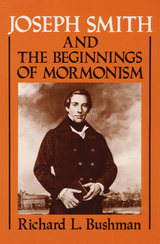 Joseph Smith and the Beginnings of Mormonism
Richard L. Bushman
University of Illinois Press, 1984 Winner of the David Woolley Evans and Beatrice Evans Biography Award and a History Book Club selection, 1985. The core of Mormon belief was a conviction about actual events. The test of faith was not adherence to a certain confession of faith but belief that Christ was resurrected, that Joseph Smith saw God, that the Book of Mormon was true history, and that Peter, James, and John restored the apostleship. Mormonism was history, not philosophy. It is as history that Richard L. Bushman analyzes the emergence of Mormonism in the early nineteenth century. Bushman, however, brings to his study a unique set of credentials--he is both a prize-winning historian and a faithful member of the Latter-day Saints church. For Mormons and non-Mormons alike, his book provides a very special perspective on an endlessly fascinating subject. Building upon previous accounts and incorporating recently discovered contemporary sources, Bushman focuses on the first twenty-five years of Joseph Smith's life--up to his move to Kirtland, Ohio, in 1831. Bushman shows how the rural Yankee culture of New England and New York--especially evangelical revivalism, Christian rationalism, and folk magic--both influenced and hindered the formation of Smith's new religion. Mormonism, Bushman argues, must be seen not only as the product of this culture, but also as an independent creation based on the revelations of its charismatic leader. In the final analysis, it was Smith's ability to breathe new life into the ancient sacred stories and to make a sacred story out of his own life which accounted for his own extraordinary influence. By presenting Smith and his revelations as they were viewed by the early Mormons themselves, Bushman leads us to a deeper understanding of their faith.
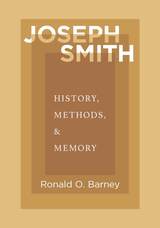 Joseph Smith: History, Methods, and Memory
Ronald O. Barney
University of Utah Press, 2020 The study of Joseph Smith and his writings have long been shaped by the polemical atmosphere that surrounds Smith’s claims to divine authorship. Even after a half-century of serious scholarship devoted to Smith, fundamental questions remain about how to best interpret features of his life and writing. Smith’s own History of Joseph Smith (edited and revised at the beginning of the twentieth century by B. H. Roberts) created an enduring image that influenced Mormon theology, doctrine, and polity for generations. With new historical documents now available, however, a reappraisal of Smith and the origins of Mormonism is necessary.
Ronald O. Barney, a former editor of the Joseph Smith Papers, applies new interpretations to Smith in history and memory, re-examining both his writings and contemporary accounts of him. The book explores the best methodologies for appraising the historical record, including a review of Smith’s world and its contextual background, an analysis of his foundational experiences, and a characterization of Smith as a man and prophet. Though the premise of re-evaluation may be unsettling to traditionalists, a modern reconsideration of the historical record’s entire range of sources is necessary to fashion a strategy for evaluating Smith and his enduring but complex legacy.
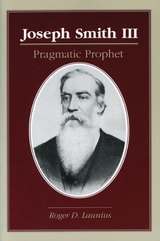 Joseph Smith III: PRAGMATIC PROPHET
Roger D. Launius
University of Illinois Press, 1999 This masterful study charts the extensive common ground and telling differences between two widely separated coal-mining communities: Lanarkshire, in the Clyde Valley of southwest Scotland, and the northern Illinois coalfield that became a prime destination for skilled Scottish migrant miners in the mid-nineteenth century. Challenging the prevailing exceptionalist paradigm of labor history, John Laslett examines the social, economic, and political context of each of these communities in generous detail. He traces the progressive heightening of class consciousness as the coal industry evolved from skilled hand labor to an increasingly mechanized extraction process and the escalating hostility between miners and mineowners as their interests split along class lines. Examining the rise of militant industrial unionism in both areas, Laslett provides a sophisticated explanation of the American and Scottish miners' divergent approaches to collectivist solutions. Based on a profound knowledge of both communities, Colliers across the Sea tells a compelling story of industrial transformation's human costs, of conflict and greed, and of democratic aspirations and community.
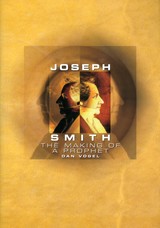 Joseph Smith: The Making of a Prophet
Dan Vogel
Signature Books, 2004 Rarely does a biographer capture the sense of being in a different time and mindset to the extent that readers feel they are reliving events through the eyes of the biographer’s subject. This is the skill of Dan Vogel—after twenty-five years of researching Joseph Smith’s life and publishing on such related issues as Seekerism, the Book of Mormon, views of Smith’s contemporaries about Indian origins, and the existing documents pertaining to Smith family experiences. Vogel weaves together strands of evidence into a complete fabric including, among other aspects of Smith’s environment, the content of his daily dictation of scriputre and revelation—all contributing to a nearly complete view of what occurred on any given day in Smith’s lfie. The result is as much intellectual history as traditional biography. Readers will feel engaged in the dramatic, formative events in the prophet’s life against a backdrop of theology, local and national politics, Smith family dynamics, organizational issues, and interpersonal relations. One can form a mental picture, and many will find themselves carrying on an internal dialogue about the issues raised. Vogel addresses the following broad themes:
1. The home that Joseph Smith was raised in was religiously divided. His mother’s family was orthodox and partly mystical; his father’s family tended toward rationalism and skepticism. Joseph’s maternal grandfather published an account of seeing a heavenly light and hearing Jesus’ voice. Joseph’s paternal grandfather promoted Thomas Paine’s skeptical critique of the Bible, The Age of Reason. 2. When Andrew Jackson was elected U.S. president in 1828, it was a key transitional period in American history. Jackson was a Mason and an advocate of secularism, which alarmed evangelical Protestants. 3. The Smith family experienced a series of financial setbacks and lost their farm in 1825. Joseph felt disinherited and saw no way of escape—no chance for his family to regain its former standing in the community. 4. Joseph found solace in religion. In the early 1820s, he had a powerful conversion experience and felt that Jesus had forgiven him of his sins. This inspired him to share the gospel message with others, particularly with his own family. About the same time, Smith found a talent for preaching and delivered “passable” Methodist sermons at a nearby revival. 5. Over time, Joseph became aware that people trusted him and that he could be an influence for good or ill, that even through nefarious means, God worked through him when his heart was right. He realized this when he led groups in search of Spanish treasure in New York and Pennsylvania. Although no treasure was found, the men sincerely believed that Smith had a spiritual gift and could see where casks of gold were hidden in the earth. This training ground in spiritual leadership was invaluable because the prophet learned how to create an environment for belief—one in which people could exercise faith and be converted to Christ through the sensible influence of the Spirit, all prior to the overarching work of restoring primitive Christianity.
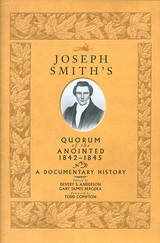 Joseph Smith's Quorum of the Anointed, 1842-1845: A Documentary History
Devery S. Anderson
Signature Books, 2005 “Joseph Smith’s Quorum of the Anointed” The first Latter-day Saint temple ceremonies were performed, not in Kirtland, Ohio, but on the second floor of Joseph Smith’s Red Brick Store in Nauvoo, Illinois. For nearly four years beginning in 1842, the prophet’s modest mercantile functioned as the de facto temple?the site of the first washings, anointings, endowments, and sealings. In contrast, the grand edifice known as the Nauvoo Temple was in operation for only two months before the Saints left Illinois for the West. Preparations to initiate the first members of Joseph Smith’s Quorum of the Anointed, or Holy Order, as it was also known, were made on May 3, 1842. The walls of the second level of the Red Brick Store were painted with garden-themed murals, the rooms fitted with carpets, potted plants, and a veil hung from the ceiling. All the while, the ground level continued to operate as Joseph Smith’s general mercantile. In this companion volume to The Nauvoo Endowment Companies and The Development of LDS Temple Worship, 1846-2000: A Documentary History, the editors have assembled all available primary references to the Anointed Quorum and its regular gatherings, both in the Red Brick Store and elsewhere (women were initially washed and anointed in Emma Smith’s bedroom and then escorted to the store) prior to the opening of the Nauvoo Temple. The sources include excerpts from the diaries of William Clayton, Joseph Fielding, Zina D. H. Jacobs, Heber C. Kimball, John Taylor, Willard Richards, George A. Smith, Joseph Smith, Wilford Woodruff, and Brigham Young; autobiographies and reminiscences by Joseph C. Kingsbury, George Miller, and Mercy Fielding Thompson; letters from Vilate Kimball and Lucius N. Scoville; the Manuscript History of Brigham Young; General Record of the Seventies, Book B; Bathsheba W. Smith’s unedited testimony from the 1892 Temple Lot Case; other manuscripts such as the Historian’s Office Journal and “Meetings of Anointed Quorum”; and published records such as the History of the Church, Latter Day Saints’ Messenger and Advocate and Times and Seasons.
from the jacket flap: Despite the secrecy imposed upon members of the Anointed Quorum, word of the gatherings above Joseph Smith’s store soon spread. In one instance, housekeeper Maria Jane Johnston helped prepare the special ceremonial clothing for John Smith to wear at the group’s meetings. In another, Ebenezer Robinson innocently opened the upstairs door at the mercantile and was startled to see church apostle John Taylor in a long white robe and “turban,” carrying a sword. Only Nauvoo’s elite were invited to participate in these new ceremonies?never more than ninety individuals and even fewer during Joseph Smith’s lifetime?and, as the editors of the current volume write, only those who had been introduced to the prophet’s doctrine of plural marriage. An unusual aspect of the Quorum of the Anointed, compared to the membership in the Nauvoo Masonic Lodge, was that women were initiated as regular members. However, the women effectively disappear after Brigham Young’s assumption of leadership in 1844, following Joseph Smith’s death, and remain virtually absent until the Nauvoo Temple is completed nearly a year and a half later. Readers will also note some of the differences in protocol between what Smith instigated and what Young eventually settled on, for instance that members could be washed and anointed repeatedly but were “endowed” only once. There were not yet proxy ordinances. Among Latter-day Saints today, temple worship is a sensitive topic; but the editors of this volume do not reveal anything that would be considered invasive or indelicate. In fact, the accounts, which come almost exclusively from the early LDS leadership itself, manifest discretion about what to report. Never before have these primary, authoritative sources been correlated by date for comparison and fuller understanding of the gradual development of the temple ceremonies. Readers may find an added benefit in discovering some of their own ancestors’ names included in these records; but in fact, anyone interested in LDS temple worship will find this compilation of primary documents to be invaluable.
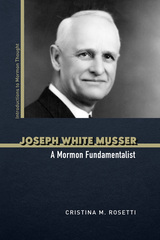 Joseph White Musser: A Mormon Fundamentalist
Cristina M. Rosetti
University of Illinois Press, 2024 In 1921, the Church of Jesus Christ of Latter-day Saints excommunicated Joseph White Musser for his refusal to give up plural marriage. Cristina M. Rosetti tells the story of how a Church leader followed his beliefs into exile and applied the religious thought he began to develop in the mainline faith to become a foundational theologian of Mormon fundamentalism. Musser’s devotion to Joseph Smith’s vision and the faith’s foundational texts reflected a widespread uneasiness with, and reaction against, changes taking place across society. Rosetti analyzes how Musser’s writing and thought knit a disparate group of outcast LDS believers into a movement. She also places Musser’s eventful life against the backdrop of a difficult period in LDS history, when the Church strained to disentangle itself from plural marriage and leaders like Musser emerged to help dissident members make sense of their lives outside the mainstream. The first book-length account of the Mormon thinker, Joseph White Musser reveals the figure whose teachings helped mold a movement.
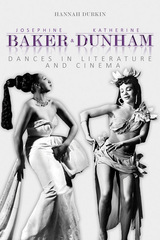 Josephine Baker and Katherine Dunham: Dances in Literature and Cinema
Hannah Durkin
University of Illinois Press, 2019 Josephine Baker and Katherine Dunham were the two most acclaimed and commercially successful African American dancers of their era and among the first black women to enjoy international screen careers. Both also produced fascinating memoirs that provided vital insights into their artistic philosophies and choices. However, difficulties in accessing and categorizing their works on the screen and on the page have obscured their contributions to film and literature. Hannah Durkin investigates Baker and Dunham’s films and writings to shed new light on their legacies as transatlantic artists and civil rights figures. Their trailblazing dancing and choreography reflected a belief that they could use film to confront racist assumptions while also imagining—within significant confines—new aesthetic possibilities for black women. Their writings, meanwhile, revealed their creative process, engagement with criticism, and the ways each mediated cultural constructions of black women's identities. Durkin pays particular attention to the ways dancing bodies function as ever-changing signifiers and de-stabilizing transmitters of cultural identity. In addition, she offers an overdue appraisal of Baker and Dunham's places in cinematic and literary history.
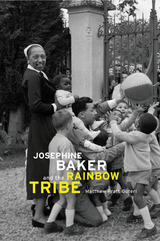 Josephine Baker and the Rainbow Tribe
Matthew Pratt Guterl
Harvard University Press, 2014 Creating a sensation with her risqué nightclub act and strolls down the Champs Elysées, pet cheetah in tow, Josephine Baker lives on in popular memory as the banana-skirted siren of Jazz Age Paris. In Josephine Baker and the Rainbow Tribe, Matthew Pratt Guterl brings out a little known side of the celebrated personality, showing how her ambitions of later years were even more daring and subversive than the youthful exploits that made her the first African American superstar.
Her performing days numbered, Baker settled down in a sixteenth-century chateau she named Les Milandes, in the south of France. Then, in 1953, she did something completely unexpected and, in the context of racially sensitive times, outrageous. Adopting twelve children from around the globe, she transformed her estate into a theme park, complete with rides, hotels, a collective farm, and singing and dancing. The main attraction was her Rainbow Tribe, the family of the future, which showcased children of all skin colors, nations, and religions living together in harmony. Les Milandes attracted an adoring public eager to spend money on a utopian vision, and to worship at the feet of Josephine, mother of the world.
Alerting readers to some of the contradictions at the heart of the Rainbow Tribe project—its undertow of child exploitation and megalomania in particular—Guterl concludes that Baker was a serious and determined activist who believed she could make a positive difference by creating a family out of the troublesome material of race.
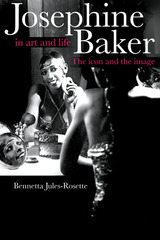 Josephine Baker in Art and Life: THE ICON AND THE IMAGE
Bennetta Jules-Rosette
University of Illinois Press, 2006 Josephine Baker (1906-1975) was a dancer, singer, actress, author, politician, militant, and philanthropist, whose images and cultural legacy have survived beyond the hundredth anniversary of her birth. Neither an exercise in postmodern deconstruction nor simple biography, Josephine Baker in Art and Life presents a critical cultural study of the life and art of the Franco-American performer whose appearances as the savage dancer Fatou shocked the world. Although the study remains firmly anchored in Josephine Baker’s life and times, presenting and challenging carefully researched biographical facts, it also offers in-depth analyses of the images that she constructed and advanced. Bennetta Jules-Rosette explores Baker’s far-ranging and dynamic career from a sociological and cultural perspective, using the tools of sociosemiotics to excavate the narratives, images, and representations that trace the story of her life and fit together as a cultural production.
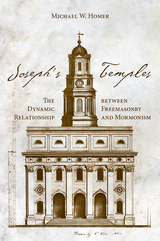 Joseph’s Temples: The Dynamic Relationship between Freemasonry and Mormonism
Michael W. Homer
University of Utah Press, 2014 The apparent parallels between Mormon ritual and doctrine and those of Freemasonry have long been recognized. That Joseph Smith, Brigham Young, and other early church leaders were, at least for a time, Masons, is common knowledge. Yet while early historians of the LDS Church openly acknowledged this connection, the question of influence was later dismissed and almost became taboo among faithful church members. Just as Mormons have tried to downplay any ties to Freemasonry, Masons have sought to distance themselves from Mormonism. In Joseph’s Temples, Michael Homer reveals how deeply the currents of Freemasonry and Mormonism entwined in the early nineteenth century. He goes on to lay out the later declining course of relations between the two movements, until a détente in recent years.
There are indications that Freemasonry was a pervasive foundational element in Mormonism and that its rituals and origin legends influenced not just the secret ceremonies of the LDS temples but also such important matters as the organization of the Mormon priesthood, the foundation of the women’s Relief Society, the introduction and concealment of polygamy, and the church’s position on African Americans’ full membership. Freemasonry was also an important facet of Mormons’ relations with broader American society.
The two movements intertwined within a historical context of early American intellectual, social, and religious ferment, which influenced each of them and in varying times and situations placed them either in the current or against the flow of mainstream American culture and politics. Joseph’s Temples provides a comprehensive examination of a dynamic relationship and makes a significant contribution to the history of Mormonism, Freemasonry, and their places in American history.
Recipient of the Meritorious Book Award from the Utah Division of State History
Josh Gibson: The Power and the Darkness
Mark Ribowsky
University of Illinois Press, 1996 It is said that Josh Gibson is the only man ever to have hit a fair ball out of Yankee Stadium. Some claim he hit as many as seventy-five home runs in a season. All agreed he was a frightening hitter to face. What Satchel Paige was to pitching in the Negro leagues, Gibson was to hitting: their greatest star, biggest gate attraction, and most important symbol.
Though Gibson is best remembered as "the black Babe Ruth," Ruth became a beloved symbol of the national pastime, while Gibson lived a life veiled in the darkness that came both from the shadow world of the Negro leagues and from within his own tortured soul.
Mark Ribowsky, the widely acclaimed biographer of Satchel Paige, pulls no punches in his portrait of this magnificent, troubled athlete. This is the most complete, thorough, and authoritative account of the life of black ball's greatest hitter, and one of its most important stars.
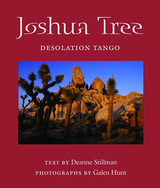 Joshua Tree: Desolation Tango
Text by Deanne Stillman; Photographs by Galen Hunt
University of Arizona Press, 2006 In a subtle dance of arid solitude, two southern California deserts come together at Joshua Tree National Park. One is the Colorado Desert—an extension of the Sonoran Desert—and features natural gardens of ocotillo and cholla cactus. The other end of the park engages the Mojave Desert, the special habitat of the Joshua tree as well as some of the most interesting geologic displays found anywhere. After the area became a national monument in 1936, local and regional residents were the primary visitors. As Southern California grew so did park visitation; Joshua Tree now lies within a three-hour drive of more than 18 million people. Elevated from national monument to national park status in 1994, Joshua tree now sees greater numbers of visitors than ever from around the nation and the world. For Deanne Stillman, Joshua Tree is a place of pilgrimage. Her own desert mecca, the park speaks to her in ways that no other place does. With crisp and impassioned narrative she takes the reader through the park’s wonders, including a talking cactus, mysterious petroglyphs, and rocks in the shape of the late New York Yankees manager Billy Martin. Stunning photographs by Galen Hunt further accentuate the gorgeous landscape, highlighting the growing need to preserve its beauty. While it explores the park’s history, geology, flora, and fauna, Joshua Tree also is a plea to walk lightly on the land, to conserve our natural heritage, and to appreciate places that call out to the soul. Additional Information and Publicity Electric Politics Review World Hum Excerpt Arroyo Monthly San Bernardino Sun Christmas Pick Los Angeles Times Profile
Josiah Quincy, 1772–1864: The Last Federalist
Robert A. McCaughey
Harvard University Press, 1974 Josiah Quincy’s life encompassed both the American Revolution and the Civil War. He was, as James Russel Lowell called him, “a great public character.” The first modern biography of Josiah Quincy casts light on the changing fortunes of New England’s colonial elite, the character of early nineteenth-century urban life, the history of Harvard, and the conservative contribution to the anti-slavery movement. Finally it indicates the role Federalist ideology continued to play in American life long after it had become politically discredited.
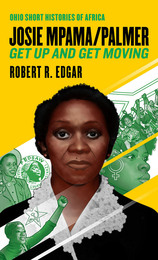 Josie Mpama/Palmer: Get Up and Get Moving
Robert R. Edgar
Ohio University Press, 2020 While African National Congress narratives dominate much of the scholarship on South Africa’s freedom struggle, Josie Mpama/Palmer’s political life offers a different perspective. Highly critical of the patriarchal attitudes that hindered black women from actively participating in politics, Mpama/Palmer was an outspoken advocate for women’s social equality and encouraged black women to become more involved in national conversations. The first black woman to join the Communist Party of South Africa and an antiapartheid activist, Josie Mpama/Palmer remained involved in critical issues all her life, especially protests against Bantu Education and other forms of racial and sexist discrimination. She was an integral figure in establishing the Federation of South African Women, an organization open to women of all races. Mpama/Palmer’s activism and political legacy would become an inspiring example for women in South Africa and around the world to get up and get moving.
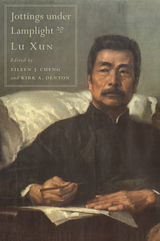 Jottings under Lamplight
Lu Xun
Harvard University Press, 2017 Lu Xun (1881–1936) is widely considered the greatest writer of twentieth-century China. Although primarily known for his two slim volumes of short fiction, he was a prolific and inventive essayist. Jottings under Lamplight showcases Lu Xun’s versatility as a master of prose forms and his brilliance as a cultural critic with translations of sixty-two of his essays, twenty of which are translated here for the first time.
While a medical student in Tokyo, Lu Xun viewed a photographic slide that purportedly inspired his literary calling: it showed the decapitation of a Chinese man by a Japanese soldier, as Chinese bystanders watched apathetically. He felt that what his countrymen needed was a cure not for their physical ailments but for their souls. Autobiographical accounts describing this and other formative life experiences are included in Jottings, along with a wide variety of cultural commentaries, from letters, speeches, and memorials to parodies and treatises.
Lu Xun was remarkably well versed in Chinese tradition and playfully manipulated its ancient forms. But he also turned away from historical convention, experimenting with new literary techniques and excoriating the “slave mentality” of a population paralyzed by Confucian hierarchies. Tinged at times with notes of despair, yet also with pathos, humor, and an unparalleled caustic wit, Lu Xun’s essays chronicle the tumultuous transformations of his own life and times, providing penetrating insights into Chinese culture and society.
 Journal and Letter Book of Nicholas Buckeridge, 1651-1654
John Jenson
University of Minnesota Press, 1973 Journal and Letter Book of Nicholas Buckeridge, 1651-1654 was first published in 1973. Minnesota Archive Editions uses digital technology to make long-unavailable books once again accessible, and are published unaltered from the original University of Minnesota Press editions.Nicholas Buckeridge was an employee of the East India Company from the 1640’s into the 1660’s, and his journal and letter book provide an account of English trade with India, Persia and East Africa in the mid-seventeenth century, a period for which few records of this kind have survived. Many logbooks and journals of the early years of the company have been preserved at the India office but materials for the general period of 1645 to 1660 are very scant. Buckeridge describes the places he visited, the problems of trading, the goods traded, and some of the prices obtained in the trading. The journal complements the early records of the Assada plantation venture of the East India Company and also provides a picture of the perilous life of a merchantman in his endeavors for the company. The editor, a former rare-book librarian at the University of Minnesota, provides a general introduction as well as brief introductions to each of the eighteen pieces from the letter book and journal. There are a facsimile reproduction of a page from the Buckeridge account and two maps. This is a publication from the James Ford Bell Library at the University of Minnesota.
 Journal for the Study of Radicalism 10, no. 1
Arthur Versluis
Michigan State University Press Journals, 2016 IN THIS ISSUE
Editor's Introduction
Articles
Andrew Lyndon Knighton, “'The Life of a Dangerous Time': Thomas McGrath and the Potential of Poetry"
Jeeshan Gazi, "Pynchon’s Nineteen Eighty-Four: Vineland, Film, and the Tragedy of the American Activism of the 1960s"
Sean Cashbaugh, "A Paradoxical, Discrepant, and Mutant Marxism: Imagining a Radical Science Fiction in the American Popular Front"
Babacar M’Baye, "The Trickster in Ishmael Reed’s Dualistic Representations of Black Radicalism and Nationalism in Mumbo Jumbo"
Interview
Arthur Versluis, "A Conversation About Radicalism in Contemporary Greece"
Book Reviews
Michael J. Turner, Liberty and Liberticide: The Role of America in Nineteenth-Century British Radicalism, reviewed by Barbara Ellen Logan
Robert Justin Goldstein, ed., Little “Red Scares”: Anti-Communism and Political Repression in the United States, 1921–1946, reviewed by Stephen Nepa
Leilah Danielson, American Gandhi: A. J. Muste and the History of Radicalism in the Twentieth Century, reviewed by Roger Chapman
Darius V. Echeverría, Aztlán Arizona: Mexican American Educational Empowerment, 1968–1978, reviewed by Eddie Bonilla
Roger N. Buckley and Tamara Roberts, eds., Yellow Power, Yellow Soul: The Radical Art of Fred Ho, reviewed by James A. Wren
Jeffrey S. Juris and Alex Khasnabish, eds., Insurgent Encounters: Transnational Activism, Ethnography, and the Political, reviewed by Alexander I. Stingl
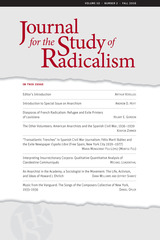 Journal for the Study of Radicalism 10, no. 2
Arthur Versluis
Michigan State University Press Journals, 2016 IN THIS ISSUE
Editor's Introduction
Articles
Andrew D. Hoyt, "Introduction to Special Issue on Anarchism"
Hilary E. Gordon, "Diasporas of French Radicalism: Refugee and Exile Printers of Louisiana"
Kenyon Zimmer, "The Other Volunteers: American Anarchists and the Spanish Civil War, 1936–1939"
Maria Monserrat Feu-López, “'Transatlantic Trenches' in Spanish Civil War Journalism"
Michael Loadenthal, "Interpreting Insurrectionary Corpora"
Dana Williams, Jeffrey Shantz, "An Anarchist in the Academy, a Sociologist in the Movement"
Daniel Opler, "Music from the Vanguard"
Book Reviews
Adam Ewing, The Age of Garvey: How a Jamaican Activist Created a Mass Movement and Changed Global Black Politics, reviewed by Janelle Marlena Edwards
Lindsey R. Swindall, The Path to the Greater, Freer, Truer World: Southern Civil Rights and Anticolonialism, 1937–1955, reviewed by Jessica E. Birch
Stephen Siff, Acid Hype: American News Media and the Psychedelic Experience, reviewed by Chris Elcock
David Cunningham, Klansville, U.S.A.: The Rise and Fall of the Civil Rights–Era Ku Klux Klan, reviewed by John S. Huntington
Ralph Young, Dissent: The History of an American Idea, reviewed by Ryan McIlhenny
 Journal for the Study of Radicalism 11, no. 1
Arthur Versluis
Michigan State University Press Journals, 2017 IN THIS ISSUE
Editor's Introduction
Articles
Alice Poma, Tommaso Gravante, "Beyond the State and Capitalism: The Current Anarchist Movement in Italy"
Choonib Lee, "Women’s Liberation and Sixties Armed Resistance"
Mark Grueter, "Red Scare Scholarship, Class Conflict, and the Case of the Anarchist Union of Russian Workers, 1919"
Dani Spinosa, "Postanarchist Literary Theory and the Experiment: Some Preliminary Notes"
Vasiliki Petsa, "Memory, Revenge, and Political Violence: Two Case Studies in Greek Fiction"
Aruna Krishnamurthy, "The Revolutionary Man in Naxalite Literature"
Duncan Moench, "Freud over Marx: Christopher Lasch’s Antiradical Evolution"
Book Reviews
The Wrong Hands: Popular Weapons Manuals and Their Historic Challenges to a Democratic Society, by Ann Larabee, reviewed by Ralph Young
Sasha and Emma: The Anarchist Odyssey of Alexander Berkman and Emma Goldman, by Paul Avrich and Karen Avrich, reviewed by Suzanne Orr
Psychedelic Mysticism: Transforming Consciousness, Religious Experiences, and Voluntary Peasants in Postwar America, by Morgan Shipley, reviewed by Wesley G. Phelps
Trying Home: The Rise and Fall of an Anarchist Utopia on Puget Sound, by Justin Wadland, reviewed by Michael Potts
The East Is Black: Cold War China in the Black Radical Imagination, by Robeson Taj Frazier, reviewed by Ting Man Tsao
In Search of Power: African Americans in the Era of Decolonization, 1956–1974, by Brenda Gayle Plummer, reviewed by David Mathew Walton
 Journal for the Study of Radicalism 11, no. 2
Arthur Versluis
Michigan State University Press Journals, 2017 IN THIS ISSUE
Editor's Introduction
Articles
Michael Loadenthal, “'Eco-Terrorism': An Incident-Driven History of Attack (1973–2010)"
Michael Loadenthal, "Appendix: Methodology—Database Construction"
Miguel Cardina, "Territorializing Maoism: Dictatorship, War, and Anticolonialism in the Portuguese 'Long Sixties'"
Andrew S. Baer, "Let Them Get Their Voices Out: The Death Row 10, Radical Abolitionists, and the Anti–Death Penalty Movement in Illinois (1996–2011)"
Nick J. Sciullo, "George Jackson’s December 1964 Letter to His Father: Agency from within the Prison Walls"
Interview
Jack Taylor, Morgan Shipley, "Radical Spirituality: A Conversation with Ramona Africa from MOVE"
Book Reviews
Framing a Radical African Atlantic: African American Agency, West African Intellectuals and the International Trade Union Committee of Negro Workers, by Holger Weiss, reviewed by Jacob A. Zumoff
Radicalism and Music: An Introduction to the Music Cultures of al-Qa’ida, Racist Skinheads, Christian-Affiliated Radicals, and Eco-Animal Rights Militants, by Jonathan Pieslak, reviewed by Simon Stow
Radicals on the Road: Internationalism, Orientalism, and Feminism during the Vietnam Era, by Judy Tzu-Chun Wu, reviewed by Voichita Nachescu
I Belong Only to Myself: The Life and Writings of Leda Rafanelli, by Andrea Pakieser, reviewed by Megan E. Cannella
The Left Side of History: World War II and the Unfulfilled Promise of Communism in Eastern Europe, by Kristen Ghodsee, reviewed by Irina Gigova
 Journal for the Study of Radicalism 12, no. 1
Arthur Versluis
Michigan State University Press Journals, 2018 IN THIS ISSUE
Editor's Introduction
James Forbes, “'God Has Opened the Eyes of the People': Religious Rhetoric and the Upper Canada Rebellion of 1837"
Brett Colasacco, "Before Trump: On Comparing Fascism and Trumpism"
Daniel H. Inouye, "A Transnational Embrace: Issei Radicalism in 1920s New York"
Victoria Carty, "Student Mobilizations in Canada and the United States: Resistance to the Neoliberalization of Higher Education"
Timo Schrader, "Education as a Human Right: The Real Great Society and a Pedagogy of Activism"
Reviews
Radical Legacies: Twentieth-Century Public Intellectuals in the United States, by Arthur Redding, reviewed by Gordon Alley-Young
Beer and Revolution: The German Anarchist Movement in New York City, 1880–1914, by Tom Goyens, reviewed by Frank Jacob
Radicals, Revolutionaries, and Terrorists, by Colin J. Beck, reviewed by Nick J. Sciullo
Scripting Revolution: A Historical Approach to the Comparative Study of Revolutions, edited by Keith Michael Baker and Dan Edelstein, reviewed by Eric R. Smith
Gendering Radicalism: Women and Communism in Twentieth-Century California, by Beth Slutsky, reviewed by Lloyd Isaac Vayo
 Journal for the Study of Radicalism 12, no. 2
Arthur Versluis
Michigan State University Press Journals, 2018 Editor’s Introduction
Articles
A Beautiful Politics: Theodore Roszak’s Romantic Radicalism and the Counterculture
Christopher Partridge
The Counterculture on Stage: Radical Theater and the Reclamation of the Public Space in 1960s San Francisco
Pedro Galán Lozano
“The Hell that Bigots Frame”: Queen Mab, Luddism, and the Rhetoric of Working-Class Revolution
Stephen J. Pallas
The Black Legion: J. Edgar Hoover and Fascism in the Depression Era
Andrew G. Palella
Road to Notoriety: Johann Most in Austria (1868–1871)
Tom Goyens
The Green Marketplace: Applying a Model of Church and Sect to the Environmental Movement
Feler Bose
Beyond Reason: Activism and Law in a Time of Climate Change
Nicole Rogers
Reviews
Right-Wing Critics of American Conservatism, by George Hawley
Reviewed by Joshua D. Farrington
Heads: A Biography of Psychedelic America, by Jesse Jarnow
Reviewed by Chris Elcock
Living Anarchism: José Peirats and the Spanish Anarcho-Syndicalist Movement, by Chris Ealham and Goals and Means: Anarchism, Syndicalism, and Internationalism in the Origins of the Federacion Anarquista Iberica, by Jason Garner
Reviewed by Pedro García Guirao
Red Scare Racism and Cold War Black Radicalism, by James Zeigler
Reviewed by Beverly C. Tomek
Communal Luxury: The Political Imaginary of the Paris Commune, by Kristin Ross
Reviewed by Aaron Weinacht
 Journal for the Study of Radicalism 13, no. 1
Arthur Versluis
Michigan State University Press Journals, 2019 In This Issue
Editor's Introduction
Articles
“Dreaming (Un)American Dreams”: Anarchists and the Struggle to Define Americanism
Alice Bèja
Cesare Lombroso and the Anarchists
Patricia Bass
An Alternative to Revolution: Marcus Raskin’s Theory of Social Reconstruction
Brian Mueller
Psychedelic Feminism: A Radical Interpretation of Psychedelic Consciousness?
Kim Hewitt
Radical Trips: Exploring the Political Dimension and Context of the 1960s Psychedelic Poster
Scott B. Montgomery
Conversation with Christopher Bache
Morgan Shipley and Arthur Versluis
Book Reviews
Radical Gotham: Anarchism in New York City from Schwab’s Saloon to Occupy Wall Street, edited by Tom Goyens
Reviewed by Michael Blum
Len, A Lawyer in History: A Graphic Biography of Radical Attorney Leonard Weinglass, by Seth Tobocman
Reviewed by Timothy Dean Draper
Rethinking Antifascism: History, Memory and Politics, 1922 to the Present, edited by Hugo García, Mercedes Yusta, Xavier Tabet, and Cristina Clímaco
Reviewed by Joseph Fronczak
Riot. Strike. Riot: The New Era of Uprisings, by Joshua Clover
Reviewed by Adam Szetela
Hegemony How-To: A Roadmap for Radicals, by Jonathan Smucker
Reviewed by Leonard A. Steverson
Struggle for the Soul of the Postwar South: White Evangelical Protestants and Operation Dixie, by Elizabeth Fones-Wolf and Ken Fones-Wolf
Reviewed by Ryan C. McIlhenny
 Journal for the Study of Radicalism 14, no. 1
Arthur Versluis
Michigan State University Press Journals, 2020 In This Issue
Arthur Versluis, "Editor’s Introduction"
Jan Jämte, Måns Lundstedt, and Magnus Wennerhag, "From Radical Counterculture to Pragmatic Radicalism? The Collective Identity of Contemporary Radical Left-libertarian Activism in Sweden"
Evelyn Burg, "Fellow Traveling along the Popular Front: Kenneth Burke’s Two Attitudes toward History"
Marta Romero-Delgado, "Personal and Political Narratives: Radicalization of Peruvian Women Combatants"
Chelsea Roberts, "Left of New Left: The Living Theater's Anarchism"
Geoffrey Poitras, "The Luddite Trials: Radical Suppression and the Administration of Criminal Justice"
Brent Ranalli, "Thomas Paine’s “Neglected” Pamphlet: Agrarian Justice"
Reviews
Margaret Randall, Exporting Revolution: Cuba’s Global Solidarity, reviewed by George Sirgiovanni
Paul Jackson, Colin Jordan and Britain’s Neo-Nazi Movement: Hitler’s Echo, reviewed by Matthew Brittingham
Ryan Shaffer, Music, Youth and International Links in Post-War British Fascism: The Transformation of Extremism, reviewed by Michael J. Lorr
Alain Brossat and Sylvia Klingsberg, translated by David Fernbach, Revolutionary Yiddishland: A History of Jewish Radicalism, reviewed by Frank Jacob
Sarah Eppler Janda, Prairie Power: Student Activism, Counterculture, and Backlash in Oklahoma, 1962–1972, reviewed by Michael Dennis
Robyn C. Spencer, The Revolution Has Come: Black Power, Gender, and the Black Panther Party in Oakland, reviewed by Carmen Walker
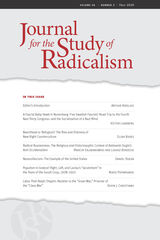 Journal for the Study of Radicalism 14, no. 2
Arthur Versluis
Michigan State University Press Journals, 2020 In This Issue
Editor’s Introduction
Articles
Victor Lundberg, "A Fascist Baby Hawk in Nuremberg: Five Swedish Fascists’ Road Trip to the Fourth Nazi Party Congress—and the Socialization of a Nazi Mind"
Eliah Bures, "Beachhead or Refugium? The Rise and Dilemma of New Right Counterculture"
Marcin Skladanowski and Lukasz Borzecki, "Radical Russianness: The Religious and Historiosophic Context of Aleksandr Dugin’s Anti-Occidentalism"
Daniel Rueda, "Neoecofascism: The Example of the United States"
Nikos Potamianos, "Populism in Greece? Right, Left, and Laclau’s 'Jacobinism' in the Years of the Goudi Coup, 1908–1910"
Kevin J. Christiano, "Labor Poet Ralph Chaplin: Resister to the 'Great War,' Prisoner of the 'Class War'"
Reviews
Knights Errant of Anarchy: London and the Italian Anarchist Diaspora (1880–1917), by Pietro Di Paola, reviewed by Michael Blum
The Ecocentrists: A History of Radical Environmentalism, by Keith Makoto Woodhouse, reviewed by Sarah M. Pike
The Misinterpellated Subject, by James R. Martel, reviewed by Keisha A. Brown
Considering Emma Goldman: Feminist Political Ambivalence and the Imaginative Archive, by Clare Hemmings, reviewed by Jennifer Miller
The Art of Protest: Culture and Activism from the Civil Rights Movement to the Present, 2nd ed., by T. V. Reed, reviewed by Anthony Irwin Ashbolt
The Politics of Attack: Communiqués and Insurrectionary Violence, by Michael Loadenthal, reviewed by Andrew Kettler
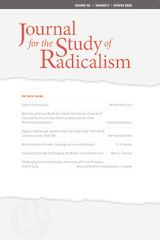 Journal for the Study of Radicalism 15, no. 1
Arthur Versluis
Michigan State University Press Journals, 2021 In This Issue
Arthur Versluis, "Editor’s Introduction"
Laura Greenwood, "Book-Anarchists on Bomb-Anarchists: Free Society, Diversity of (Textual) Tactics, and Anarchist Counternarratives of the McKinley Assassination"
Nathan Godfried, "Organic Intellectuals and Working-Class Organizing: The Case of Sarainne Loewe, 1920–38"
R. H. Lossin, "No Interests in Common: Sabotage as Structural Analysis"
Davide Turcato , "Interpreting the World, Changing the World: The Anarchist View"
Angeliki Monnier and Annabelle Seoane, "Challenging the Jihadi Narrative: Interviews of French Prisoners Held in Syria"
Reviews
Libertarian Socialism: Politics in Black and Red, edited by Alex Prichard, Ruth Kinna, Saku Pinta, and David Berry, reviewed by Josh Fattal
Assassins against the Old Order: Italian Anarchist Violence in Fin de Siècle Europe, by Nunzio Pernicone and Fraser Ottanelli, reviewed by Ryan Wittingslow
Such a Pretty Girl: A Story of Struggle, Empowerment, and Disability Pride, by Nadina LaSpina, reviewed by Ea Nicole Madrigal and Brian Brutlag
Seeking Rights from the Left: Gender, Sexuality, and the Latin American Pink Tide, edited by Elisabeth Jay Friedman, reviewed by Hollie Fitzmaurice
Autonomy, Refusal, and the Black Bloc: Positioning Class Analysis in Critical and Radical Theory, by Robert F. Carley, reviewed by Sean Cashbaugh
Radicalism and Music: An Introduction to the Music Cultures of al-Qa’ida, Racist Skinheads, Christian-Affiliated Radicals, and Eco-Animal Rights Militants, by Jonathan Pieslak, reviewed by Stephen Nepa
 Journal for the Study of Radicalism 15, no. 2
Arthur Versluis
Michigan State University Press Journals, 2021 In This Issue
Editor’s Introduction
Arthur Versluis
Articles
German Individualist Anarchism around 1850: The “Critically Economic Radicalism” of the Free Traders Hermann Maron, Heinrich Beta, and Wilhelm Lipke
Elias Huber
An Anarchist Revolution? Emma Goldman as an Intellectual Revolutionary
Frank Jacob
Dangerous Ideas and Leftist Deviation: Anarchism and North Korean Political Culture
Benjamin Young
Left-Wing Populism and Nationalism: A Comparative Analysis of the Patriotic Narratives of Podemos and France insoumise
Laura Chazel and Vincent Dain
The Political Culture of the Industrial Workers of the World: A Radicalization of the Republican-Democratic Political Culture Within the American and International Labor Movements
Jaime Caro-Morente
Reviews
Anarchy—In a Manner of Speaking, by David Graeber, Mehdi Belhaj Kacem, Assia Turquier-Zauberman, and Nika Dubrovski
Reviewed by Peterson Roberto da Silva
Beyond Power and Resistance: Politics at the Radical Limits, by Peter Bloom
Reviewed by Tim Jelfs
Goddess of Anarchy: The Life and Times of Lucy Parsons, American Radical, by Jacqueline Jones
Reviewed by Chelsea Gibson
In the Company of Rebels: A Generational Memory of Bohemians, Deep Heads, and History Makers, by Chellis Glendinning
Reviewed by Allison Hahn
Is Free Speech Racist?, by Gavan Titley
Reviewed by Alex Khasnabish
Food Justice Now!: Deepening the Roots of Social Struggle, by Joshua Sbicca
Reviewed by Elizabeth Dean Medley
 Journal for the Study of Radicalism 16, no. 1
Arthur Versluis
Michigan State University Press Journals, 2022 In This Issue
Editor’s Introduction
Arthur Versluis
Articles
Construction of Radicalization: Examination of an Important Construct in the Explanation of Terrorism
Hillary McNeel, Lisa Sample, and Samantha Clinkinbeard
“Radical”: The Age of Revolution’s Atlantic Context and the Genesis of a Political Concept in France
Remzi Çağatay Çakirlar
Religion and Radicalism: The Puritanism in All Revolutions
Stephen Baskerville
A Theoretical Revolutionary: Eric J. Hobsbawm and the “Sociological” Trilogy of Deviance
Francesco Landolfi
Crime and Protest: Squatters, Mayors, and Other Social Bandits in Post-15M Spain
Justin Helepololei
“Apollo Has Saved Us!”: Global Ambition and Metapolitical Warfare in Alt-Right Religion
Josh Vandiver
Book Reviews
Communists and Community: Activism in Detroit’s Labor Movement, 1941–1956, by Ryan Pettengill
Reviewed by Joel Wendland-Liu
Martyrs and Tricksters: An Ethnography of the Egyptian Revolution, by Walter Armbrust
Reviewed by Coeli Fitzpatrick
Modern Science and Anarchy, by Peter Kropotkin, edited by Iain McKay
Reviewed by James E. Willis III
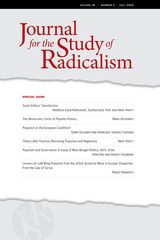 Journal for the Study of Radicalism 16, no. 2
Arthur Versluis
Michigan State University Press Journals, 2022 In This Issue
Editors’ Introduction
Andreas Eder-Ramsauer, Seongcheol Kim, and Andy Knott
Special Issue
The Democratic Limits of Populist Politics
Mark Devenney
Populism or the European Condition?
Emmy Eklundh and Henrique Tavares Furtado
Theory after Practice: Revisiting Populism and Hegemony
Andy Knott
Populism and Governance: A Study of West Bengal Politics, 1975–2016
Ayan Das and Debajit Goswami
Lessons for Left-Wing Populism from the 2010s Austerity Wave in Europe: Dispatches from the Case of Syriza
Panos Panayotu
Yamamoto Tarō and Reiwa Shinsengumi: Love, Populism, and Radical Democracy for a Neoliberal Japan
Andreas Eder-Ramsauer
Between Radical Democracy and Left Populism on the Margins: Protest Politics and Organization in the Left Front (Russia) and the Left Opposition (Ukraine)
Seongcheol Kim
Weaponizing Masculinity: Populism and Gendered Stories of Victimhood
Alexandra Homolar and Georg Löfflmann
Duterte’s “War on Drugs” Rhetoric: Consolidating Power through Penal Populism
Lena Muhs
 Journal for the Study of Radicalism 17, no. 1
Arthur Versluis
Michigan State University Press Journals, 2023 In This Issue
Articles
The Revue International Anarchiste’s World Survey (1924–1925): A Transnational Attempt at Reappraising, Revising, and Reinvigorating the Anarchist Movement
Jason Garner
Sacred Socialism: Morality, Humanity, and the Divine in Laurence Gronlund’s Our Destiny
Ryan C. McIlhenny
Spitting at Jim Crow: E. Franklin Frazier’s “The Pathology of Race Prejudice” and the Parody of Social Scientific Racism
Jacob A. Zumoff
Reclaiming the Revolutionary: Harry Haywood, Communist Organizing, and the Carlock Murder Protest in Memphis, Tennessee, 1933
Matthew Isaacs
Ecology, Anti-Christianity, and the Far Right: The Readings and Recoveries of Lynn White’s “The Historical Roots of Our Ecological Crisis”
Stéphane François and Adrien Nonjon
Neo-Gnosticism and the American Dissident Right
Arthur Versluis
Book Reviews
The American Counterculture: A History of Hippies and Cultural Dissidents, by Damon R. Bach
Allene Nichols
SNCC’s Stories: The African American Freedom Movement in the Civil Rights South, by Sharon Monteith
Jennifer L. Hayes
Anarchism, by Carissa Honeywell
James E. Willis III
Vietnam’s Prodigal Heroes: American Deserters, International Protest, European Exile, and Amnesty, by Paul Benedikt Glatz
David A. Justice
The Red Thread: The Passaic Textile Strike, by Jacob Zumoff
Ryan Pettengill
 Journal for the Study of Radicalism 9, no. 1
Arthur Versluis
Michigan State University Press Journals, 2015 IN THIS ISSUE
Editor's Note
Articles
E. Dimitris Kitis, "The Anti-Authoritarian Chóros: A Space for Youth Socialization and Radicalization in Greece (1974–2010)"
Andrew Hoyt, "Active Centers, Creative Elements, and Bridging Nodes: Applying the Vocabulary of Network Theory to Radical History"
Benjamin J. Pauli, "Pacifism, Nonviolence, and the Reinvention of Anarchist Tactics in the Twentieth Century"
Kyle Harvey, "Prayer or Protest?: The Radical Promise of Voluntary Poverty in the Anti-Nuclear Fast for Life, 1983"
J. A. Zumoff, "Hell in New Jersey: The Passaic Textile Strike, Albert Weisbord, and the Communist Party"
Book Reviews
Hardhats, Hippies and Hawks: The Vietnam Antiwar Movement as Myth and Memory, by Penny Lewis, reviewed by Ashley Bourgeois
NGOization: Complicity, Contradictions and Prospects, edited by Aziz Choudry and Dip Kapoor, reviewed by Andrzej Klimczuk
Body and Soul: The Black Panther Party and the Fight Against Medical Discrimination, by Alondra Nelson, reviewed by Michael Litwack
Black Revolutionary: William Patterson and the Globalization of the African American Freedom Struggle, by Gerald Horne, reviewed by Christopher Love
 Journal for the Study of Radicalism 9, no. 2
Arthur Versluis
Michigan State University Press Journals, 2015 IN THIS ISSUE
Editor's Introduction
Articles
Elizabeth Lowry, "Spiritual (R)evolution and the Turning of Tables: Abolition, Feminism, and the Rhetoric of Social Reform in the Antebellum Public Sphere"
Chris Elcock, "The Fifth Freedom: The Politics of Psychedelic Patriotism"
Morgan Shipley, “'This Season’s People': Stephen Gaskin, Psychedelic Religion, and a Community of Social Justice"
Stephen J. Whitfield, "A Radical in Academe: Herbert Marcuse at Brandeis University"
Tor Egil Førland, "Cutting the Sixties Down to Size: Conceptualizing, Historicizing, Explaining"
Interview
Chris Elcock, "A Conversation with Ed Rosenfeld"
Book Reviews
Martin A. Miller, The Foundations of Modern Terrorism: State, Society and the Dynamics of Political Violence, reviewed by Michael Barkun
Carter Taylor Seaton, Hippie Homesteaders: Arts, Crafts, Music, and Living on the Land in West Virginia, reviewed by Timothy Miller
Martha Biondi, The Black Revolution on Campus, reviewed by Ronald A. Kuykendall
David Naguib Pellow, Total Liberation: The Power and Promise of Animal Rights and the Radical Earth Movement, reviewed by Lloyd Isaac Vayo
Aram Goudsouzian, Down to the Crossroads: Civil Rights, Black Power, and the Meredith March Against Fear, reviewed by Kenneth Jolly
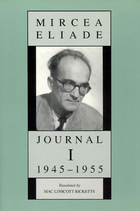 Journal I, 1945-1955
Mircea Eliade
University of Chicago Press, 1990 Journal I is a story of revewal—of the new life that began for Mircea Eliade in the fall of 1945 when he became an expatriate. Eliade came to Paris virtually empty-handed, following the death of his first wife and the Soviet takeover of Romania, which made him a persona non grata there. He had left half a lifetime in Romania: his parents, whom he never saw again; his library; unpublished and unfinished manuscripts, including the journal notebooks prior to 1940; an academic career; and Zalmoxis, the journal of religious studies he founded.
During the lean years in Paris Eliade lived and worked in small, cold rooms; prepared meals on a Primus stove; pawned his valuables; and asked friends for loans. Eventually he secured a research stipend from the Bollingen Foundation. His ten years in Paris were among his most productive; the books he wrote during this period brought him worldwide acclaim as a historian of religions. He records his first meetings with Carl Jung, Pierre Teilhard de Chardin, Gershom Scholem, Georges Bataille, André Breton, Raffaele Pettazzoni, and many other scholars and writers.
Eliade also continued to write literary works. Numerous entries describe his five-year struggle with his novel The Forbidden Forest. Spanning the twelve fateful years from 1936 to 1948, it expresses within a fictional framework the central themes of Eliade's work on religions. Writing the novel was a Herculean task in which Eliade summarized and memorialized his old Romanian life.
Journal II, 1957-1969
Mircea Eliade
University of Chicago Press, 1989 Mircea Eliade's journal of the years 1957-1969, originally published in English under the title No Souvenirs, is the testimony of a "wandering scholar" caught between three worlds: his native Romania, the France he fled to, and his last homeland, the United States. The journal is filled with his work, dreams, memories of his youth, stories of his travels, the reflections of each day.
 Journal III, 1970-1978
Mircea Eliade
University of Chicago Press, 1989 More an eloquent chronicle of the mind's life than a recital of daily routine, this volume of Mircea Eliade's journal offers a remarkably candid portrait of a renowned scholar and his work. The entries—full of marvelous ideas, outlines for works never written, responses to the works of others, and much more—reveal many rarely glimpsed sides of the private, as well as public, man. What did he really think of the students who came to him for instruction in black magic? What were his private reflections on feminism, student drug use, the sexual revolution, the nature of American scholars and scholarship? Who were his best friends, why did he enjoy their company, and why did he shun the company of others?
Quite apart from the personal, biographical interest the journal holds, it is a document of cultural and intellectual significance. Eliade remarks on such colleagues and friends as Jung, Dumézil, Ricoeur, Bellow, and Ionesco. Moreover, the period covered encompasses Eliade's most active years as a teacher, and the journal beautifully reflects his developing views on religion, history, and the nature of academic culture. Bits and pieces of Eliade's past life are juxtaposed with thoughts about ongoing projects and work yet to be undertaken as well as with anecdotes of his travels and comments on world events.
A genuine treat for Eliade readers and those interested in history of religions, Journal III provides new perspectives on many of Eliade's other works—the History of Religious Ideas, Ordeal by Labyrinth, the Autobiography. At the same time the journal is a mature scholar's record of the aftermath of the 1960s, a turbulent period that profoundly affected American university life. As such, these writings hold valuable insights into not only the life and work of one man but also the cultural history of an entire era.
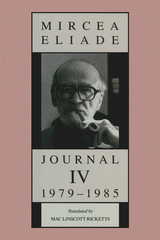 Journal IV, 1979-1985
Mircea Eliade
University of Chicago Press, 1989 Journal IV is the first publication, in a translation from the Romanian manuscript, of the journal that Mircea Eliade kept during the last seven years of his life. In this period, Eliade is ensconced as a famous scholar—his works are being translated into many languages and books about him arrive regularly in the mail. His encounters with scholars of like repute are recorded in the journal; after a party in Paris, Eliade shares a taxi with Claude Lévi-Strauss and inadvertently makes off with his raincoat.
Running like a fault line through the peak of his success, however, is Eliade's painful awareness of his physical decline—failing vision, arthritic hands, and continual fatigue. Again and again he repeats how little time he has to finish the projects he is working on—his autobiography, the third and fourth volumes of his History of Religious Ideas, and the duties associated with his editorship of the Encyclopedia of Religion. He poignantly recounts the sharpest blow: the disorganization and eventual destruction by fire of his personal library.
Within the scope of Journal IV Eliade and his world go to ruin. What does not decline is the vivid and persistent voice of Eliade the writer, an unbreaking voice that—with death only months away—plans a reply to critics, plots out an article, and ruminates on characters to people another novella.
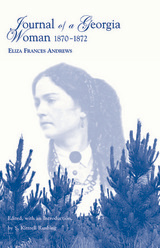 Journal Of A Georgia Woman, 1870-1872
Eliza Frances Andrews
University of Tennessee Press, 2011 Eliza Frances “Fanny” Andrews (1840–1931) was born into south-ern aristocracy in Washington, Georgia. The acclaimed author of Journal of a Georgia Girl: 1864–1865, she was an exceptional woman who went on to become a journalist, writer, teacher, and world-renowned botanist. In 1870, as Andrews was working on her first novel, she embarked on a visit to wealthy “Yankee kin” in Newark, New Jersey. The trip had a profound effect on her life, as she was astonished by the contrasts between North and South. This previously unpublished segment of Andrews’s writings begins with her New Jersey sojourn and ends with her mother’s death in 1872. It is remarkable for the light it sheds on the social and economic transformations of the Reconstruction era, particularly as they were perceived and experienced by a southern woman.
Andrews was an intelligent, sharp-witted, and skilled observer, and these qualities shine through her engaging memoir. She records her reactions to Newark society and the economic base on which it stood, comparing southern gentility and agriculture to northern brusqueness and industry. Moreover, while the diary reveals clearly the social and cultural attitudes of aristocratic southerners of the period, it also foreshadows the beginning of change as, for example, a visit to a factory opens Andrews’s eyes to the advantages of the new economy. She also recounts her frustrations with the role of southern women, exalted on the one hand but severely restricted on the other. These stark contrasts and Andrews’s own mixed feelings give the diary much of its power.
Also included in this volume are six of Andrews’s magazine and newspaper articles that appeared in the national press around the time she was keeping this journal. Taken together, her private and public writings from this period show a maturing nineteenth-century woman confronting a culture turned upside down in the new world of the Reconstruction-era South.
Andrews’s memoir, with accompanying introduction and commentary by Kit Rushing, will appeal to general readers with an interest in the nineteenth-century South as well as to historians of women, the Civil War era, and nineteenth-century America.
The Editor: S. Kittrell Rushing is head of the Department of Journalism and Mass Communication at the University of Tennessee, Chattanooga.
Journal of a Homecoming / Cahier d'un retour au pays natal
Aimé Césaire
Duke University Press, 2017 Originally published in 1939, Aimé Césaire’s Cahier d’un retour au pays natal is a landmark of modern French poetry and a founding text of the Négritude movement. This bilingual edition features a new authoritative translation, revised introduction, and extensive commentary, making it a magisterial edition of Césaire’s surrealist masterpiece.
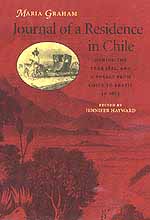 Journal of a Residence in Chile during the Year 1822, and a Voyage from Chile to Brazil in 1823
Maria Graham
University of Virginia Press, 2003 In 1821, Maria Dundas Graham sailed for South America on H.M.S. Doris, a ship sent to protect British mercantile interests in that volatile region. After her husband, the ship's captain Thomas Graham, died en route, the newly widowed Maria Graham landed in Valparaiso, Chile. Resisting all efforts to hustle her back to England, Graham, a professional writer and highly educated woman, rented herself a cottage in the Chilean--not the British--section of Valparaiso and traveled through Chile for nine months until driven out by a major earthquake and the threat of civil war.
The resulting Journal of a Residence in Chile (1824) tells the gripping story of a gothic heroine in a dangerous but fascinating new land. The author has an eye for detail and a gift for storytelling, and so she creates a travel narrative with a compelling plot and vividly realized characters.
Among the first travel narratives authored by a woman, Graham's Journal establishes literary strategies for travel texts to follow and shows clear differences from male narratives of the same period. The Journal, with Jennifer Hayward's illuminating new biographical and critical essay and appendices, is also invaluable for scholars and general readers interested in Latin America. Graham provides one of the few firsthand accounts in English of the independence movements in South America, meets with many of the major historical figures involved, provides detailed historical and political readings of events, and depicts Chile of the 1820s in accurate and loving detail.
--------------------------------------------------------------------------------
Jennifer Hayward is Associate Professor of English at the College of Wooster and the author of Consuming Pleasures: Active Audiences and Serial Fictions from Dickens to Soaps, a Choice Magazine Outstanding Academic Book selection of 1998.
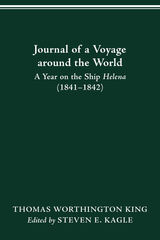 JOURNAL OF A VOYAGE AROUND THE WORLD: A YEAR ON THE SHIP HELENA (1841-1842)
THOMAS WORTHINGTON KING
Ohio State University Press, 2002 In 1841 Thomas Worthington King accepted a position as supercargo on the Helena, a ship some have called “the first American clipper,” as it was about to make its maiden voyage to China. Journal of a Voyage around the World recounts the travel of Thomas Worthington King on the Helena from 1841 to 1842. In full and well-written entries, King recounts the routines and surprises of life at sea, where storms and calms could be equally threatening, and the next day might bring a stop at St. Helena to see Napoleon’s tomb or an encounter with pirates. King provides details often missing from histories that give a real sense of the period. In his description of Chile and Peru we learn about activities as diverse as cockfighting and courtship. We learn about produce and prisons, mints and monasteries, fruits and fashions. In his account of China, King vividly describes rivers so full of boats that one could “see no water—nothing but the large mat sales” and calm groves of “green lychee, or broad leaved & rustling plantain.” Perhaps the most important subject of the diary is the diarist himself, whose talent and confidence develop on the pages of his record. Thomas Worthington King was born and raised in Chillicothe, Ohio, and was the grandson of two Ohio Senators: Rufus King and Thomas Worthington.
The Journal of African American History, volume 105 number 1 (Winter 2020)
The University of Chicago Press
University of Chicago Press Journals, 2020 This is volume 105 issue 1 of The Journal of African American History. JAAH is the leading scholarly publication in the field of African American history. Published by the University of Chicago Press on behalf of the Association for the Study of African American Life and History (ASALH), the JAAH publishes original scholarly articles and book reviews on all aspects of the African American experience. The JAAH embraces ASALH's mission of promoting, researching, preserving, interpreting, and disseminating "information about Black life, history, and culture to the global community."
The Journal of African American History, volume 105 number 2 (Spring 2020)
The University of Chicago Press
University of Chicago Press Journals, 2020 This is volume 105 issue 2 of The Journal of African American History. JAAH is the leading scholarly publication in the field of African American history. Published by the University of Chicago Press on behalf of the Association for the Study of African American Life and History (ASALH), the JAAH publishes original scholarly articles and book reviews on all aspects of the African American experience. The JAAH embraces ASALH's mission of promoting, researching, preserving, interpreting, and disseminating "information about Black life, history, and culture to the global community."
The Journal of African American History, volume 105 number 3 (Summer 2020)
The University of Chicago Press
University of Chicago Press Journals, 2020 This is volume 105 issue 3 of The Journal of African American History. JAAH is the leading scholarly publication in the field of African American history. Published by the University of Chicago Press on behalf of the Association for the Study of African American Life and History (ASALH), the JAAH publishes original scholarly articles and book reviews on all aspects of the African American experience. The JAAH embraces ASALH's mission of promoting, researching, preserving, interpreting, and disseminating "information about Black life, history, and culture to the global community."
The Journal of African American History, volume 105 number 4 (Fall 2020)
The University of Chicago Press
University of Chicago Press Journals, 2020 This is volume 105 issue 4 of The Journal of African American History. JAAH is the leading scholarly publication in the field of African American history. Published by the University of Chicago Press on behalf of the Association for the Study of African American Life and History (ASALH), the JAAH publishes original scholarly articles and book reviews on all aspects of the African American experience. The JAAH embraces ASALH's mission of promoting, researching, preserving, interpreting, and disseminating "information about Black life, history, and culture to the global community."
The Journal of African American History, volume 106 number 1 (Winter 2021)
The University of Chicago Press
University of Chicago Press Journals, 2021 This is volume 106 issue 1 of The Journal of African American History. JAAH is the leading scholarly publication in the field of African American history. Published by the University of Chicago Press on behalf of the Association for the Study of African American Life and History (ASALH), the JAAH publishes original scholarly articles and book reviews on all aspects of the African American experience. The JAAH embraces ASALH's mission of promoting, researching, preserving, interpreting, and disseminating "information about Black life, history, and culture to the global community."
The Journal of African American History, volume 106 number 2 (Spring 2021)
The University of Chicago Press
University of Chicago Press Journals, 2021 This is volume 106 issue 2 of The Journal of African American History. JAAH is the leading scholarly publication in the field of African American history. Published by the University of Chicago Press on behalf of the Association for the Study of African American Life and History (ASALH), the JAAH publishes original scholarly articles and book reviews on all aspects of the African American experience. The JAAH embraces ASALH's mission of promoting, researching, preserving, interpreting, and disseminating "information about Black life, history, and culture to the global community."
The Journal of African American History, volume 106 number 3 (Summer 2021)
The University of Chicago Press
University of Chicago Press Journals, 2021 This is volume 106 issue 3 of The Journal of African American History. JAAH is the leading scholarly publication in the field of African American history. Published by the University of Chicago Press on behalf of the Association for the Study of African American Life and History (ASALH), the JAAH publishes original scholarly articles and book reviews on all aspects of the African American experience. The JAAH embraces ASALH's mission of promoting, researching, preserving, interpreting, and disseminating "information about Black life, history, and culture to the global community."
The Journal of African American History, volume 106 number 4 (Fall 2021)
The University of Chicago Press
University of Chicago Press Journals, 2021 This is volume 106 issue 4 of The Journal of African American History. JAAH is the leading scholarly publication in the field of African American history. Published by the University of Chicago Press on behalf of the Association for the Study of African American Life and History (ASALH), the JAAH publishes original scholarly articles and book reviews on all aspects of the African American experience. The JAAH embraces ASALH's mission of promoting, researching, preserving, interpreting, and disseminating "information about Black life, history, and culture to the global community."
The Journal of African American History, volume 107 number 1 (Winter 2022)
The University of Chicago Press
University of Chicago Press Journals, 2022 This is volume 107 issue 1 of The Journal of African American History. JAAH is the leading scholarly publication in the field of African American history. Published by the University of Chicago Press on behalf of the Association for the Study of African American Life and History (ASALH), the JAAH publishes original scholarly articles and book reviews on all aspects of the African American experience. The JAAH embraces ASALH's mission of promoting, researching, preserving, interpreting, and disseminating "information about Black life, history, and culture to the global community."
The Journal of African American History, volume 107 number 2 (Spring 2022)
The University of Chicago Press
University of Chicago Press Journals, 2022 This is volume 107 issue 2 of The Journal of African American History. JAAH is the leading scholarly publication in the field of African American history. Published by the University of Chicago Press on behalf of the Association for the Study of African American Life and History (ASALH), the JAAH publishes original scholarly articles and book reviews on all aspects of the African American experience. The JAAH embraces ASALH's mission of promoting, researching, preserving, interpreting, and disseminating "information about Black life, history, and culture to the global community."
The Journal of African American History, volume 107 number 3 (Summer 2022)
The University of Chicago Press
University of Chicago Press Journals, 2022 This is volume 107 issue 3 of The Journal of African American History. JAAH is the leading scholarly publication in the field of African American history. Published by the University of Chicago Press on behalf of the Association for the Study of African American Life and History (ASALH), the JAAH publishes original scholarly articles and book reviews on all aspects of the African American experience. The JAAH embraces ASALH's mission of promoting, researching, preserving, interpreting, and disseminating "information about Black life, history, and culture to the global community."
The Journal of African American History, volume 107 number 4 (Fall 2022)
The University of Chicago Press
University of Chicago Press Journals, 2022 This is volume 107 issue 4 of The Journal of African American History. JAAH is the leading scholarly publication in the field of African American history. Published by the University of Chicago Press on behalf of the Association for the Study of African American Life and History (ASALH), the JAAH publishes original scholarly articles and book reviews on all aspects of the African American experience. The JAAH embraces ASALH's mission of promoting, researching, preserving, interpreting, and disseminating "information about Black life, history, and culture to the global community."
The Journal of African American History, volume 108 number 1 (Winter 2023)
The University of Chicago Press
University of Chicago Press Journals, 2023 This is volume 108 issue 1 of The Journal of African American History. JAAH is the leading scholarly publication in the field of African American history. Published by the University of Chicago Press on behalf of the Association for the Study of African American Life and History (ASALH), the JAAH publishes original scholarly articles and book reviews on all aspects of the African American experience. The JAAH embraces ASALH's mission of promoting, researching, preserving, interpreting, and disseminating "information about Black life, history, and culture to the global community."
The Journal of African American History, volume 108 number 2 (Spring 2023)
The University of Chicago Press
University of Chicago Press Journals, 2023 This is volume 108 issue 2 of The Journal of African American History. JAAH is the leading scholarly publication in the field of African American history. Published by the University of Chicago Press on behalf of the Association for the Study of African American Life and History (ASALH), the JAAH publishes original scholarly articles and book reviews on all aspects of the African American experience. The JAAH embraces ASALH's mission of promoting, researching, preserving, interpreting, and disseminating "information about Black life, history, and culture to the global community."
The Journal of African American History, volume 108 number 3 (Summer 2023)
The University of Chicago Press
University of Chicago Press Journals, 2023 This is volume 108 issue 3 of The Journal of African American History. JAAH is the leading scholarly publication in the field of African American history. Published by the University of Chicago Press on behalf of the Association for the Study of African American Life and History (ASALH), the JAAH publishes original scholarly articles and book reviews on all aspects of the African American experience. The JAAH embraces ASALH's mission of promoting, researching, preserving, interpreting, and disseminating "information about Black life, history, and culture to the global community."
The Journal of African American History, volume 108 number 4 (Fall 2023)
The University of Chicago Press
University of Chicago Press Journals, 2023 This is volume 108 issue 4 of The Journal of African American History. JAAH is the leading scholarly publication in the field of African American history. Published by the University of Chicago Press on behalf of the Association for the Study of African American Life and History (ASALH), the JAAH publishes original scholarly articles and book reviews on all aspects of the African American experience. The JAAH embraces ASALH's mission of promoting, researching, preserving, interpreting, and disseminating "information about Black life, history, and culture to the global community."
The Journal of African American History, volume 109 number 1 (Winter 2024)
The University of Chicago Press
University of Chicago Press Journals, 2024 This is volume 109 issue 1 of The Journal of African American History. JAAH is the leading scholarly publication in the field of African American history. Published by the University of Chicago Press on behalf of the Association for the Study of African American Life and History (ASALH), the JAAH publishes original scholarly articles and book reviews on all aspects of the African American experience. The JAAH embraces ASALH's mission of promoting, researching, preserving, interpreting, and disseminating "information about Black life, history, and culture to the global community."
The Journal of African American History, volume 109 number 2 (Spring 2024)
The University of Chicago Press
University of Chicago Press Journals, 2024 This is volume 109 issue 2 of The Journal of African American History. JAAH is the leading scholarly publication in the field of African American history. Published by the University of Chicago Press on behalf of the Association for the Study of African American Life and History (ASALH), the JAAH publishes original scholarly articles and book reviews on all aspects of the African American experience. The JAAH embraces ASALH's mission of promoting, researching, preserving, interpreting, and disseminating "information about Black life, history, and culture to the global community."
The Journal of African American History, volume 109 number 3 (Summer 2024)
The University of Chicago Press
University of Chicago Press Journals, 2024 This is volume 109 issue 3 of The Journal of African American History. JAAH is the leading scholarly publication in the field of African American history. Published by the University of Chicago Press on behalf of the Association for the Study of African American Life and History (ASALH), the JAAH publishes original scholarly articles and book reviews on all aspects of the African American experience. The JAAH embraces ASALH's mission of promoting, researching, preserving, interpreting, and disseminating "information about Black life, history, and culture to the global community."
The Journal of African American History, volume 109 number 4 (Fall 2024)
The University of Chicago Press
University of Chicago Press Journals, 2024 This is volume 109 issue 4 of The Journal of African American History. JAAH is the leading scholarly publication in the field of African American history. Published by the University of Chicago Press on behalf of the Association for the Study of African American Life and History (ASALH), the JAAH publishes original scholarly articles and book reviews on all aspects of the African American experience. The JAAH embraces ASALH's mission of promoting, researching, preserving, interpreting, and disseminating "information about Black life, history, and culture to the global community."
|
|
